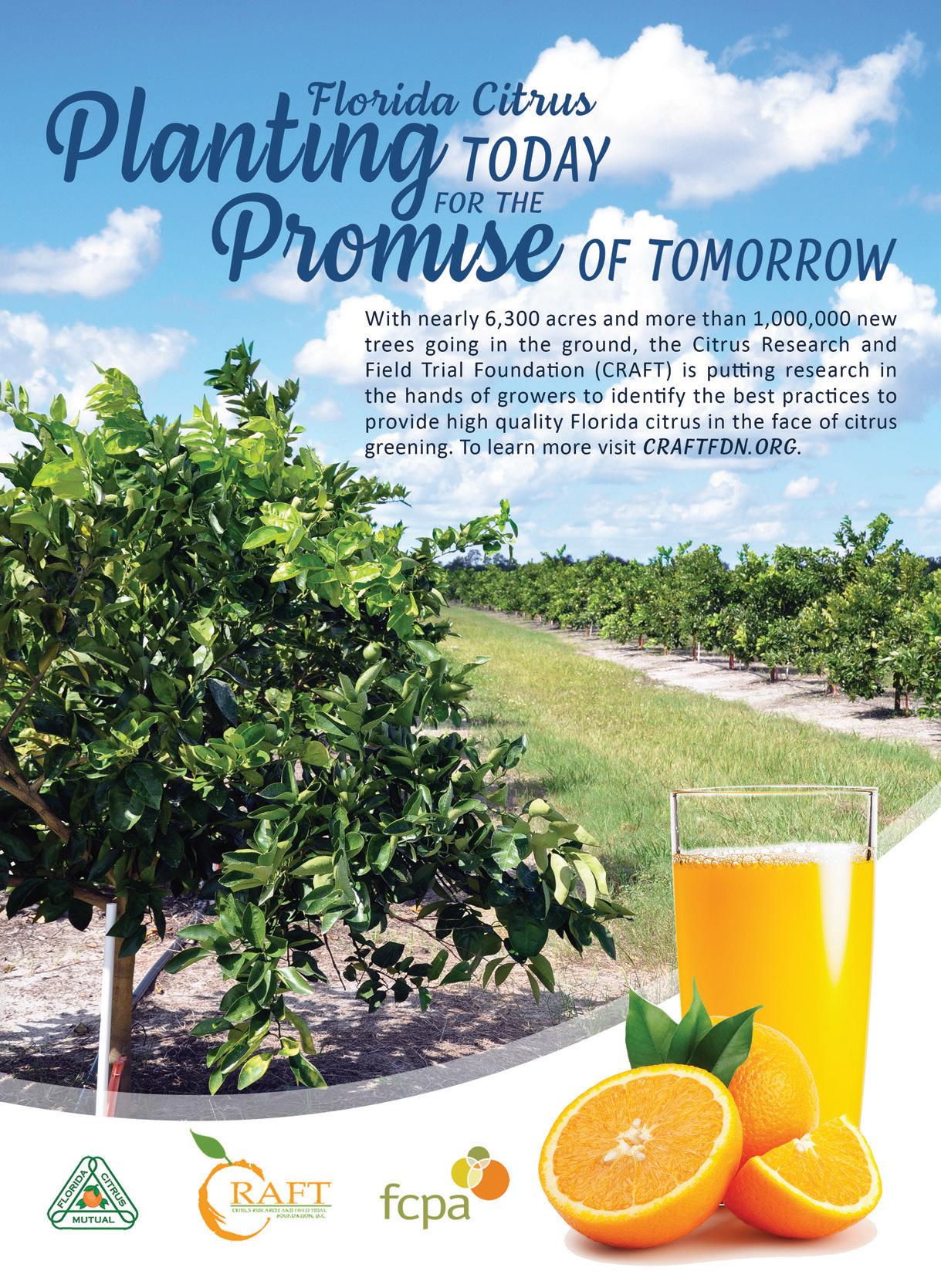







Cover

Page 34
Noble Citrus is a century-old, family-run citrus grove working to bring new varieties to Florida’s citrus industry.


Wilson













Noble Citrus is a century-old, family-run citrus grove working to bring new varieties to Florida’s citrus industry.


Wilson



SENIOR EDITOR Hannah Patterson Hill
ASSOCIATE EDITORS Rachel Graf, Hannah Nave Lewis, Carisa Ownby
SPONSORED CONTENT EDITOR Susan Chappell
CONTRIBUTING WRITERS Danielle Rotella Adams, Katie Murray Alt, Rachel Stroop, Nancy DeVault, Tracey Hackett, Nancy Henderson, Kim Hill, Christiana Lilly, Laura Leavitt, Cathy Lockman, Kelly Rogers
V.P./CONTENT & MARKETING Jessy Yancey
V.P./CREATIVE SERVICES Laura Gallagher
ART DIRECTOR Amy Hiemstra
SENIOR GRAPHIC DESIGNERS
Eliza Hawkins, Beatrice Herndon, Cynthia Hester, Emmylou Rittenour, Lindsey Tallent
PHOTO DIRECTOR Alison Hunter
PHOTO EDITOR Jess Spence
SENIOR PHOTOGRAPHER Jeff Adkins
STAFF PHOTOGRAPHER Nathan Lambrecht
V.P./DIGITAL STRATEGY Richard Stevens
WEB DEVELOPER Eric Montzka
PRESIDENT Ray Langen
CHIEF OPERATING OFFICER Kim Newsom Holmberg
EXECUTIVE VICE PRESIDENT Jordan Moore
SENIOR V.P./BUSINESS DEVELOPMENT Herb Harper

V.P./OPERATIONS Molly Morton
V.P./SALES OPERATIONS Katie Middendorf
AD TRAFFIC COORDINATOR Patricia Moisan
SENIOR AD COORDINATOR/DESIGNER Vikki Williams
SENIOR GRAPHIC DESIGNER Holly Bikakis
MARKETING COORDINATOR Sarah Henderson
FARM FLAVOR MEDIA IS A DIVISION OF Journal Communications Inc.
CHAIRMAN Greg Thurman
PRESIDENT/PUBLISHER Bob Schwartzman

CONTROLLER Chris Dudley
ACCOUNTING TEAM Maria McFarland, Lisa Owens
DATABASE DIRECTOR Debbie Woksa
EXECUTIVE SECRETARY Kristy York
HUMAN RESOURCES MANAGER Peggy Blake
Fresh From Florida is published annually by Farm Flavor Media and distributed by the Florida Department of Agriculture and Consumer Services.
For advertising information or to direct questions or comments about the magazine, please contact Farm Flavor Media at (615) 850-0309 or info@ farmflavormedia.com.
COMMISSIONER Wilton Simpson
Special thanks to all Department staff for their support. For more information about the Florida Department of Agriculture and Consumer Services, visit FDACS.gov or call (850) 617-7300
No public funds were used in the publishing of this magazine.
© Copyright 2022 Journal Communications Inc., 6550 Carothers Parkway, Suite 420, Franklin, TN 37067 (615) 771-0080. All rights reserved. No portion of this magazine may be reproduced in whole or in part without written consent.
Please recycle this magazine.
Florida Commissioner of Agriculture Wilton Simpson
I have been in and around agriculture my entire life. My background and experience as one of many Florida food producers will give me a unique perspective and appreciation for the work of the Florida Department of Agriculture and Consumer Services.
We will face many challenges and opportunities in the upcoming year. Only a few months prior to taking office, one of the most powerful storms hit Florida. The destruction from Hurricane Ian was devastating. The property and financial losses were great, but even more the disruption and suffering of thousands of our citizens across Florida.
Agriculture took an especially hard hit, and I look forward to working with our federal partners to help ensure we get every single resource available to rebuild and recover.
Farmers are resilient, particularly Florida farmers. Nobody can outwork us as we produce a safe, affordable and abundant food supply to the nation and the world.
Fresh From Florida is an important part of the mission of the department. We have a long history of great work in celebrating and highlighting the world of agriculture in our state.
I hope you enjoy this issue, and I look forward to the many great accomplishments that we will achieve in the years ahead.
Sincerely,
Wilton SimpsonCommissioner of Agriculture
Florida Department of Agriculture and Consumer Services
It is an honor to be Florida’s 13th Commissioner of Agriculture.
HOME TO 47,400 FARMS SPREAD ACROSS 9.7 MILLION ACRES, FLORIDA HAS an ideal climate for producing a diverse range of agricultural products. From citrus groves and nurseries to cattle ranches and field crops, Florida farms collectively produce more than 300 different commodities, contributing greatly to the success and stability of the state’s economy.
# 1
In 2020, Florida ranked first in the United States in production value of:










Oranges
Sugarcane


Fresh market tomatoes

Watermelons

2.07 million


People employed by Florida agriculture and agribusiness
Agriculture and agribusiness contribute $160 billion to the state’s economy.

47,400 Farms and ranches in Florida
Florida farms occupy more than 9.7 million acres. This includes land for fruit and vegetables, citrus groves, field crops and pastures.
300+ Commodities produced by Florida’s agriculture industry


Florida ranked No. 2 in the U.S. in production value of strawberries.













Sources: Florida Department of Agriculture and Consumer Services, U.S. Department of Agriculture
$867 million Worth of oranges produced in Florida in 2020
More than 90% of the orange juice in the U.S. is made from Florida oranges.
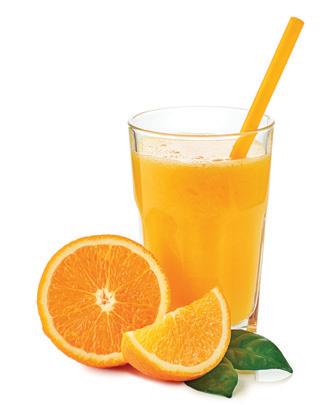

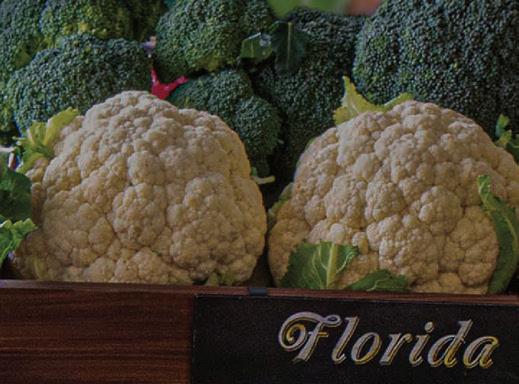

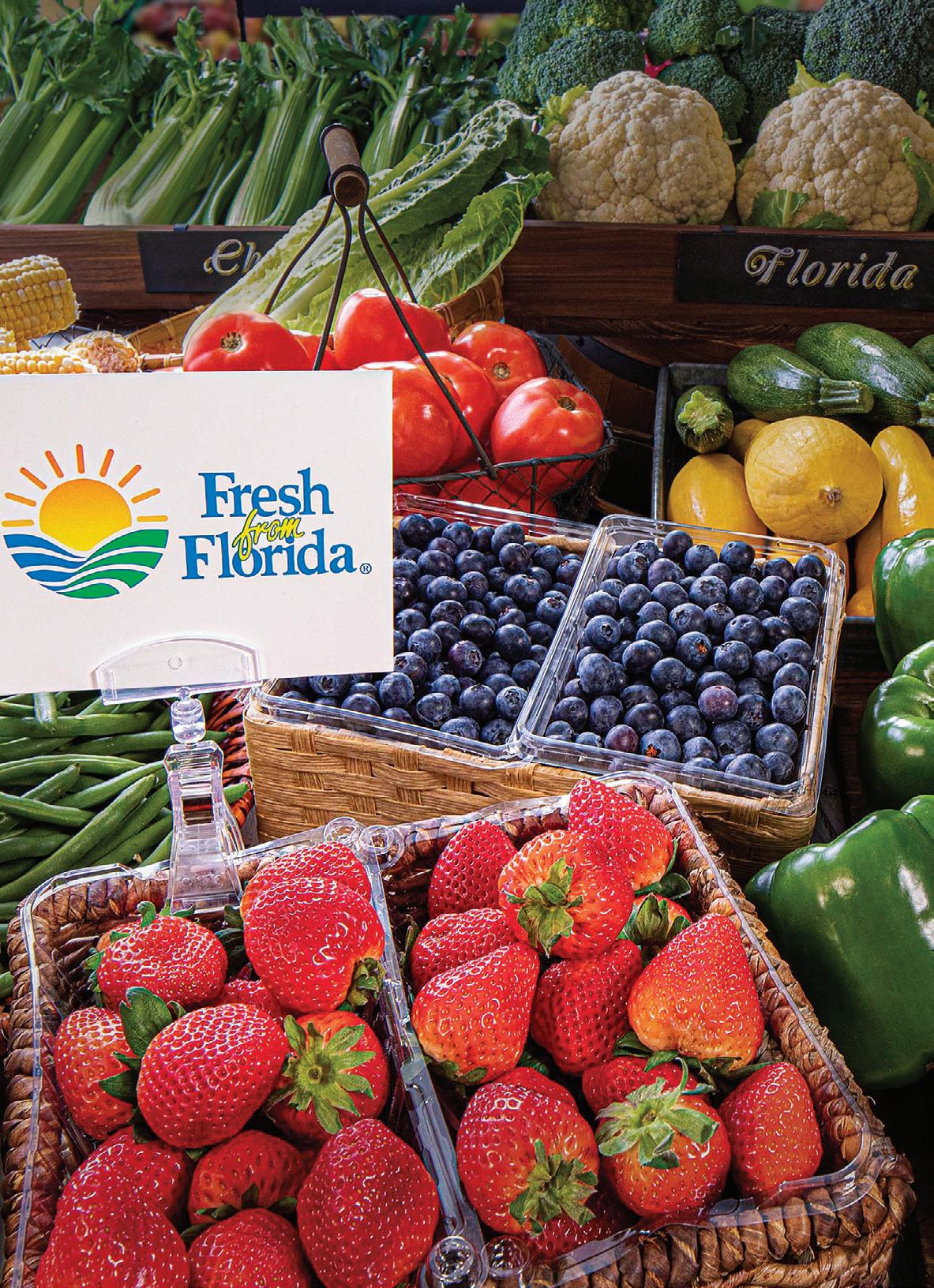
When it comes to food purchases, some things are simply beyond our control, including fluctuating prices, inflation and the supply chain. But there are ways to make the most of what we buy.
Justin Timineri, executive chef and culinary ambassador for the Florida Department of Agriculture and Consumer Services, offers these tips for saving money while eating fresh and local.
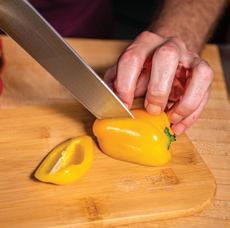

Understand the time of year produce is at its peak. In Florida, peak season for most produce is winter and spring. Delicious strawberries, citrus and leafy greens are at peak in winter months and sweet corn, blueberries and watermelon are plentiful in spring. Many other products have longer seasons and are available from November through May, such as tomatoes, bell peppers, snap beans and squash. Produce tends to cost less when it’s more plentiful and hasn’t traveled far during shipment. With farms in every county, Floridians are never far from fresh produce.
“When I go shopping, I’m not thinking of one particular recipe. I’m thinking of three different things that I can turn that
produce into,” Timineri says.
When making a list, put your knowledge of seasonal foods to work. Select fresh items to prepare – not just for dinner – but to use in delicious leftovers for breakfast and packed lunches.
“Americans waste almost 30% of what they buy at the grocery store, and that’s a lot of money every year,” he says. “So, it’s super important to have a plan.”
For menu inspiration, check store circulars online before shopping or grab one when you enter the store. Circulars often feature markdowns on seasonal produce. Don’t forget to look for the “Fresh From Florida” logo in circulars and in stores.
Place berries in a sealed glass container to extend their shelf life. Trim the bottoms of broccoli stems, put them in a shallow bowl of water in the fridge and cover the tops. Keep fresh produce properly wrapped and rotated, pulling out any small piece that goes bad before it ruins the whole bunch.
This becomes even more important when buying in bulk, another cost-conscious strategy for families who like to shop less frequently.
That way, you’ll know what to use first and what can wait a bit.
“We have great charts on our website that let us know how long we can expect certain things to last when stored properly in our refrigerator or pantry,” Timineri says.
Building on the informative “Fresh From Florida” website, club membership offers a wealth of ideas via a monthly newsletter. Hand-selected recipes are paired with seasonal offerings grown in Florida, while tips on everything from local U-pick farms to cooking shortcuts arrive in members’ inboxes 12 times a year.
“It’s super cool because it not only brings extra awareness to what’s in season, but also gives everybody a seasonal feel of what recipes they can use with those things,” Timineri says. “All that information is generally on our website, but the club narrows it down specifically into this wonderful monthly feature. And on top of that, there are fun things like giveaways to get people excited about the wonderful stuff that we grow and how to cook with it.”
You can also follow “Fresh From Florida” on Facebook, Instagram, Twitter and Pinterest for more seasonal recipes and tips.
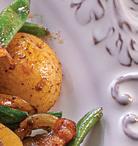



Maximizing seasonal foods is a smart way to shop, cook and eat, Timineri reiterates. “There are lots of little strategies that I employ, and that I want people to employ, to get the most out of what they do purchase. I think that’s the key,” he says.
For recipes, helpful produce tips and charts, more cost-saving strategies, or to join the “Fresh From Florida” Club, visit followfreshfromflorida.com.
– Nancy Henderson



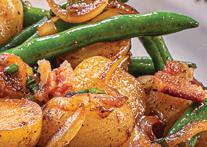



Ingredients
1 tablespoon salt




1 pound small Florida gold potatoes

4 slices bacon, cooked and crumbled (reserve 2 tablespoons bacon grease)
½ red onion, thinly sliced




½ pound Florida green beans, trimmed


2 tablespoons fresh herbs, such as parsley and thyme, finely chopped

½ lemon, zested and juiced Salt, to taste
Freshly ground black pepper, to taste
Instructions
1. Fill a large pot with water and bring to a boil. Add salt and potatoes and boil until fork-tender, about


10 to 12 minutes. Drain water and set potatoes aside.
2. In a large saute pan or cast-iron skillet, heat bacon grease over medium-high heat. Add onion and cook 3 to 5 minutes until almost caramelized. Mix in potatoes and continue cooking until the potatoes are starting to turn slightly golden brown. Add in green beans and continue sauteing another 5 to 7 minutes or until slightly tender.
3. Add herbs, lemon juice and lemon zest, and season with salt and pepper to taste. Sprinkle crumbled bacon on top and serve warm.
Fresh Tip: Leftovers make a great addition to soup the following day.
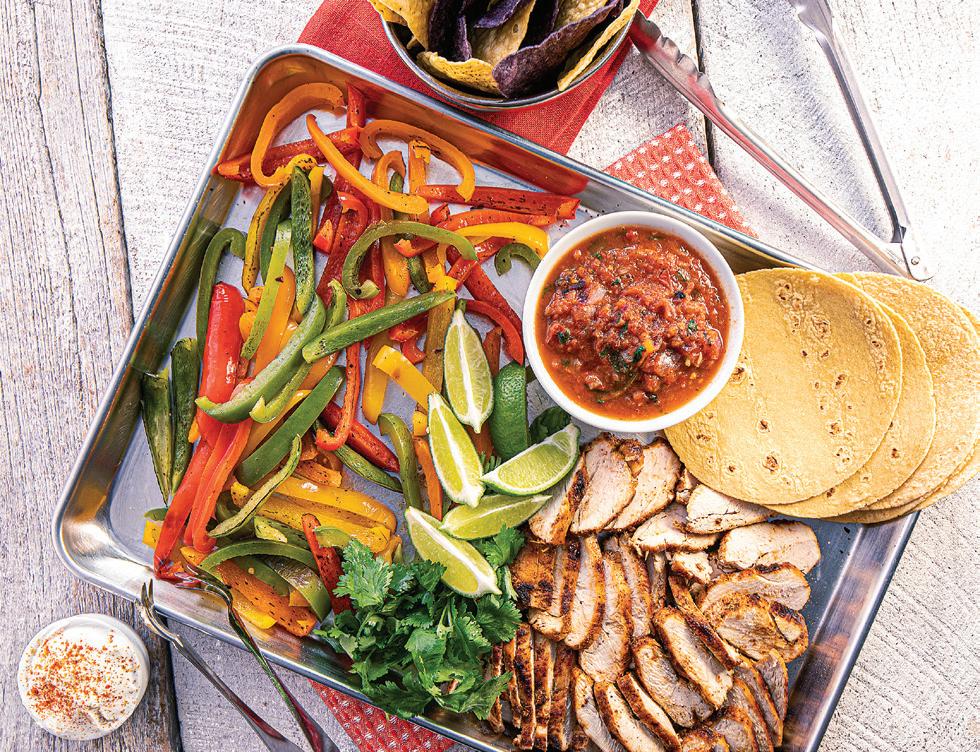
Ingredients
3 Florida bell peppers, sliced thin
1 sweet onion, sliced thin (optional)
1 pound Florida chicken breasts, sliced thin
1 tablespoon olive oil






1 tablespoon Florida Key lime juice
2 tablespoons taco seasoning














Sea salt, to taste
Black pepper, to taste
Corn tortillas, for serving

Instructions
1. Preheat oven to 425 degrees.
2. Place the sliced peppers and onions (if using) on half of a baking pan. Place the sliced chicken on the other half of the pan. Drizzle everything with oil and lime juice and sprinkle with taco seasoning, salt and pepper.
3. Bake for 15 to 20 minutes or until chicken is thoroughly cooked.
Remove from oven and serve with warm corn tortillas and toppings of choice.

Fresh Tip: You can easily make this recipe vegetarian by subbing in more Florida vegetables for the chicken.


To find more recipes, visit followfreshfromflorida.com




Ingredients


½ head Florida romaine lettuce, chopped







2 slices bacon, cooked and crumbled
2-3 ounces blue cheese, crumbled
4 tablespoons dressing (your favorite)
Instructions
1. Place lettuce on a large serving platter.

2. Sprinkle crumbled bacon and blue cheese over lettuce.
3. Add dressing and serve immediately.
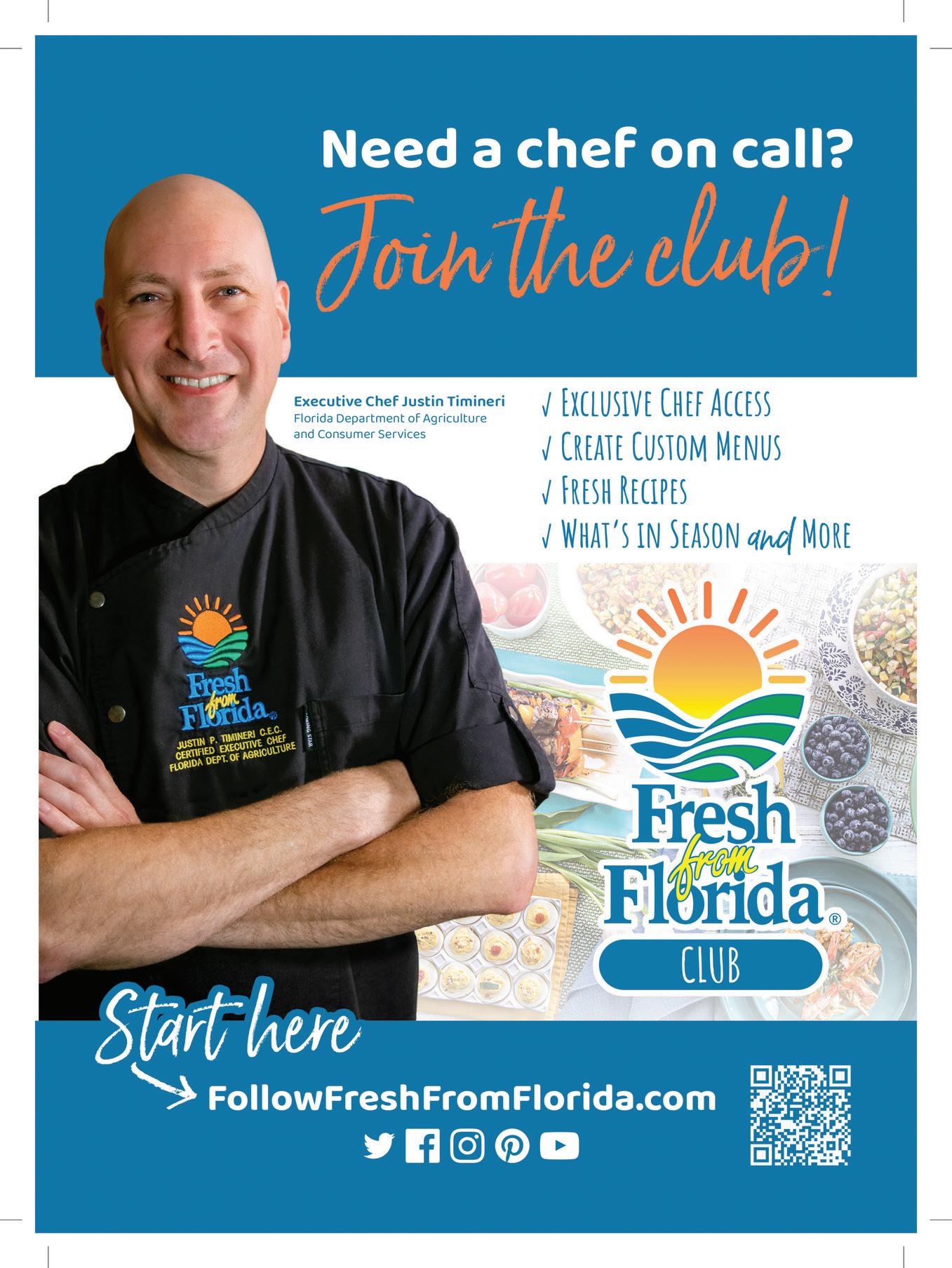
For more than 50 years, Monterey Mushrooms has produced locally grown mushrooms that are conveniently accessible to consumers nationwide via grocery stores, restaurants and more.
Stocked by nine farms across six U.S. states, including Florida, Monterey Mushrooms is the largest cultivator of fresh mushrooms in North America, growing more than 200 million pounds of fungi annually.
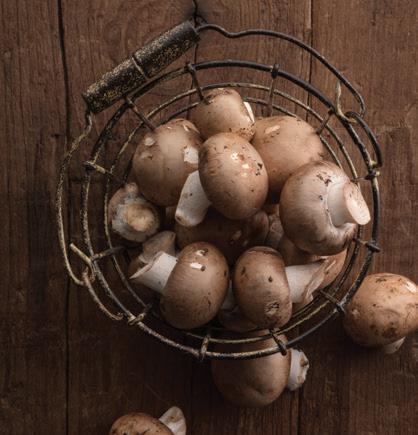
Approximately 4,000 employees, including 325 at the Zellwood farm near Orlando, run the innovative operation.
Growers, harvesters, packers and other teammates have collectively revolutionized the industry to produce edible mushrooms year round.
“The fungi grow in trays in large climate-controlled buildings to conserve space and energy,” says Leslie Harden, sales director of Monterey Mushrooms.
The initial growing step, which takes about 20 days, is the creation of rich compost with sources of nitrogen and other organic materials. Then, after pasteurizing
comes the company-patented spawn production, followed by growing, harvesting and, finally, packaging.
The average shelf life of mushrooms is 10 days from the day of harvest, so that means once they’ve reached maturity, quality mushrooms are hand-picked, packed and shipped.
“Mushrooms are extremely perishable. The average mushroom package has about seven days from the time it hits grocery shelves to when they need to be eaten,” Harden says.
She explains that because Monterey Mushrooms uses a proprietary ultraviolet sunlight system, their sliced mushrooms
are naturally enriched with high levels of vitamin D, in addition to B vitamins and the antioxidant selenium.
More than a decade ago, Monterey Mushrooms earned the Produce Marketing Association’s Marketing Impact Award thanks to its sustainable packaging. The company is committed to not only growing a wholesome product but doing so through clean techniques.
“Growing 1 pound of mushrooms requires only 1.8 gallons of water and 1.0 kilowatt hours of energy and generates only 0.7 pounds of carbon dioxideequivalent emissions,” Harden says. “In addition, the annual average yield of mushrooms is 7 pounds per square foot. That equates to up to 1 million pounds of mushrooms produced per acre every year.”
– Nancy DeVaultFor guidance on selecting, cleaning and storing mushrooms, plus recipe ideas, visit montereymushrooms.com


Ingredients
5 strips bacon, cooked and crumbled (reserve
2 tablespoons bacon grease)





½ onion, finely diced














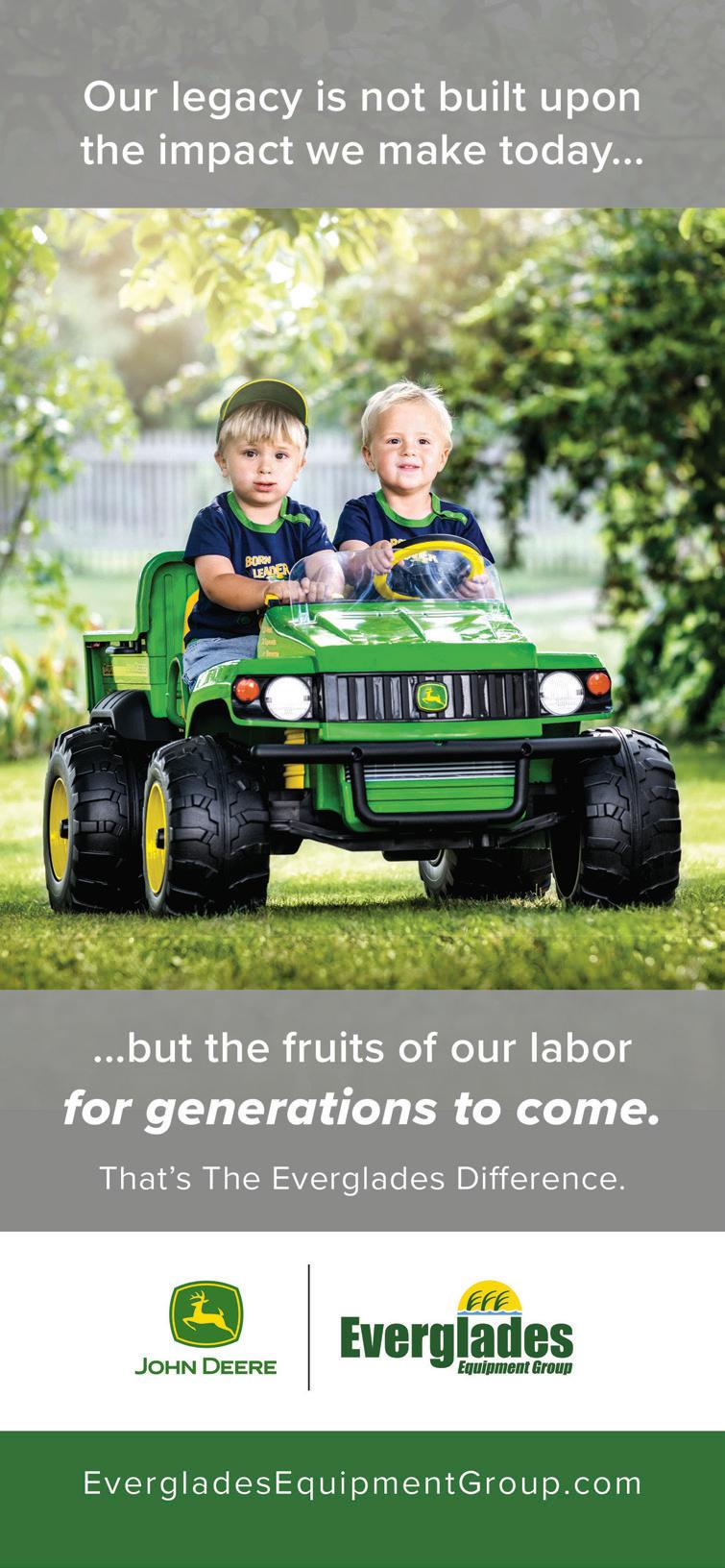
4 cups fresh Florida spinach
1 cup feta cheese, crumbled
6 ounces cream cheese, softened to room temperature
1 pinch crushed red pepper
Sea salt, to taste
Freshly ground black pepper, to taste
1 pound Florida mushrooms, stems removed
Instructions
1. Preheat oven to 375 degrees.
2. In a large skillet, heat 2 tablespoons bacon grease over medium heat. Add onion and saute until tender, about 5 minutes. Transfer to a bowl and allow to cool.
3. Add bacon, spinach, feta, cream cheese and crushed red pepper to the onions. Season with salt and pepper to taste.
4. In a large bowl, toss mushrooms and remaining bacon grease to coat. Season with salt and pepper.

5. Place mushrooms on a baking sheet round side down and roast until centers fill with liquid (about 15 minutes). Flip mushrooms and roast another 5 minutes.
6. Remove from oven and fill mushrooms with spinach mixture. Return to oven for an additional 7 minutes. Transfer to a serving platter and serve warm.








Finding and purchasing local products isn’t difficult when you live in Florida, a state known for its rich agriculture.
Thanks to programs like “Fresh From Florida,” it’s easier than ever to locate items on the shelf made with ingredients grown in the Sunshine State, which allows producers who participate in the program to display the official logo on their products.
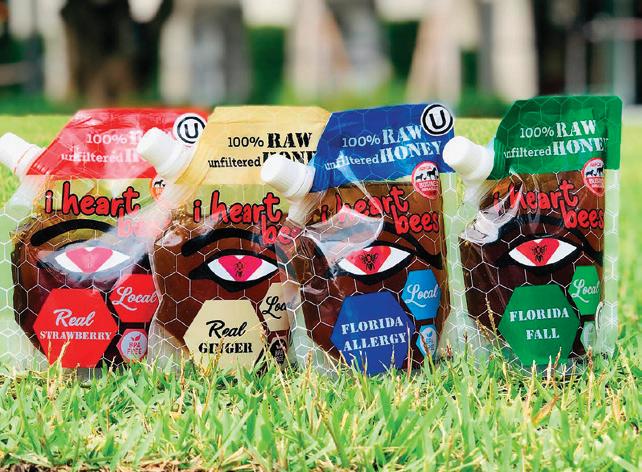
There are two slightly different logos: one for unprocessed Florida agricultural products and one for processed products, which shows a “made with” distinction. Both have the same iconic symbol of the sun, land and sea, making them easy to spot.
Two businesses that sell “Fresh From Florida” products are I Heart Bees and Guavonia Guava Grove.
Florida honey is now more accessible than ever thanks
to I Heart Bees, which can be found across the state in big-name grocery stores like Whole Foods Market, Publix, Winn-Dixie and The Fresh Market.
While I Heart Bees proudly displays the “Fresh From Florida” logo on their products, their packaging is not your typical squeeze bottle container. Instead, I Heart Bees uses stand-up bags with a pourable spout modeled after honey packaging in Japan, which co-founders Donna and Gary Hinkle discovered while traveling. Besides being much easier to use, it’s also much more environmentally friendly.
“We started out in jars like everybody else, but we switched pretty quickly, and people told us we were crazy,” Donna says. “But it just fit everything we wanted to do: It’s easier to use, and it produces 70% less carbon footprint than traditional packaging.”
I Heart Bees produces a unique line of honey products compared to others on the market. While many honey producers sell varietals like orange blossom or saw palmetto, I Heart Bees takes a seasonal approach.
“We pull honey in the summer, fall and spring,” Donna says. “Our spring has some orange blossom
in it, but it also has everything else that blooms in the springtime, and it’s the same with our other blends.”
All of the seasons are combined to create I Heart Bees’ bestselling product: Florida Allergy. Other top-sellers include Ginger Honey, which is the summer honey blended with organic ginger, and Mango Habanero Hot Honey, which packs a spicy punch and tastes great on nut butters, pizza or even cheese.
To try these amazing flavors, visit iheartbeeshoney.com or look for their uniquely bagged honey at your local grocery store.
Farmer Jorge J. Zaldivar loves guava. He loves it so much he once dreamed of opening a bakery that served guava-filled pastries and came up with the name PG Tropicals, but he changed course and began running a tropical fruit farm, Guavonia Guava Grove, and Tropication Rare Plants nursery in Homestead’s Redland Agricultural Area.
“As a Floridian, it was important to understand guava as a fresh fruit and flavor, plus how important and storied it is in Florida’s history,” Zaldivar says. “Guava jelly, the most widely known Floridian product, was sold to European customers in the early 1900s. The jelly, paste, marmalade, juice and the ever-soexquisite guava shells, also known as casquitos in Cuba, will always be a part of Florida.”
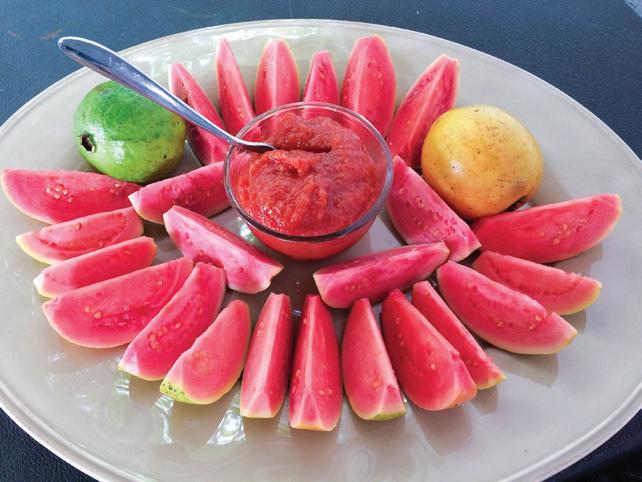
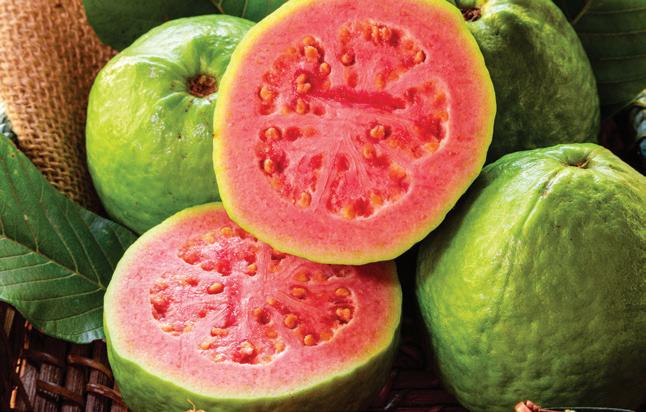
Thanks to this strong Floridian connection, being part of the “Fresh From Florida” program was an easy choice for Zaldivar.
“We wanted to find a way to promote Florida on our labeling to spotlight the fruits of the Sunshine State, and this program was the perfect fit,” Zaldivar says. “‘Fresh From Florida’ has been a great way to educate the public of Florida’s many distinguished products and programs.”
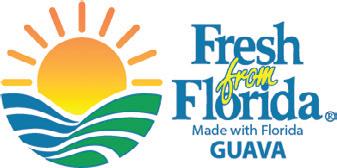
At Guavonia Guava Grove, the goal is to produce small-batch seasonal jams, jellies and marmalades from their own hand-picked fruit. Guava trees are well adapted to the warm subtropical climate in Redland
and produce fruit bountifully.
Guavonia Guava Grove sells guava fruit directly to restaurants and chefs, such as Mamey Miami and Madruga Bakery in Coral Gables and Ariete in Coconut Grove, which was awarded a Michelin star in 2022. They also supply Azucar Ice Cream Co. in Little Havana as part of their “farmto-cone” concept.
Harvests are announced via email list, and small-batch orders can be placed on PG Tropical’s website, guavarico.com.




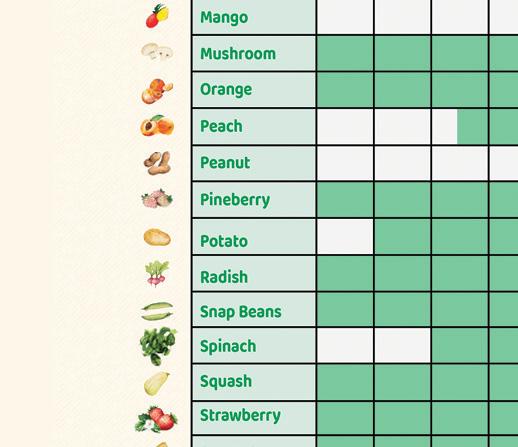



It’s no secret that Florida’s warm weather beckons visitors from near and far. It also gives a significant advantage to the state’s agriculture industry, which is a top economic contributor next to tourism.
With more than 300 commodities available and a mild climate allowing for a lengthy growing season, it is safe to say you can always find something fresh from Florida.
From classics like cucumbers, snap beans, blueberries and potatoes to more unique commodities including endive, guava and pineberries to Florida favorites like sweet corn, strawberries, tomatoes

and many others, there’s always a bounty of local fruit and vegetables to enjoy. The season for watermelon – that sweet treat of summer – starts in April, making Florida the first to the domestic market.
Not only is Florida earliest to distribute fresh produce in the spring, but for certain commodities, the state is one of the only U.S. growers through the winter months. Florida is one of the country’s top producers of strawberries, bell peppers and tomatoes, creating national and international demand for these and other Florida commodities. Plus, Florida’s famous
citrus – including oranges, grapefruit and tangerines – is available in fall, winter and spring. Check out the seasonality chart to find out what’s in season, and look for the “Fresh From Florida” logo when you shop so you know you’re buying local and supporting Florida’s farmers.
To learn more about Florida’s seasonal produce, visit followfreshfromflorida.com.








Combining Florida’s two leading industries –agriculture and tourism – it’s no surprise that agritourism is booming across the state. More and more farms are opening their gates and barn doors to visitors, providing a unique way to spend the day outdoors while learning more about agriculture.
34323 Gude Road, Dade City (352) 588-0544
kumquatgrowers.com
Kumquat Growers in Dade City is the nation’s largest producer of kumquats and kumquat products. In addition to an online shop offering fresh kumquats, jams, jellies, sauces and more, the farm hosts an annual open house in late January. During the event, grove and packinghouse tours teach visitors how kumquats are grown, picked, processed, packaged and shipped. It also features “Origin and History of the Kumquat” talks detailing the history of kumquats in the area.
The open house is typically held just before the annual Kumquat Festival in Dade City, and the gift shop is open during season.
32418 Avington Road, Sorrento (352) 735-1996
berriesandwines.com
Owned and operated by Harry and Karen Stauderman and their daughter, Lynn, Oak Haven Farms & Winery in Sorrento began as a small U-pick strawberry farm in 1996. As the operation expanded, they began looking for additional agritourism opportunities, so Harry started experimenting with strawberry wine. Fast forward to today, and they not only produce their signature, awardwinning strawberry wine but also three varieties of muscadine wine made with grapes from their vineyard and a popular blueberry wine made with berries grown exclusively in Lake County.
On the weekends, the
farm’s on-site winery opens to visitors. They also welcome visitors from early December through mid-March for strawberry picking, as well as roast-your-own hotdogs, strawberry shortcakes and ice cream sundaes on the weekends. Other offerings include a playground for children, a picnic area, hayrides and cut-your-own sunflowers.
1180 Ashville Hwy., Monticello (850) 566-4182
bskyfarm.com
From early spring through late fall, Blue Sky Farm in Monticello opens its U-pick fields to visitors eager to find fresh berries and beautiful blooms. The farm began as a U-pick blueberry operation in 2012 and has since expanded to include a popular pick-your-own flower field. Flowers are replanted throughout the growing season, providing a steady supply for more than seven months a year.
For $15, the farm supplies clippers, a Mason jar and flower food, and customers can create their own bouquet. Flowers are also available by the stem, bunch, bucket or vase. In addition to the U-pick fields, they sell flower seedlings and offer a Garden in a Box Community Supported Agriculture (CSA).
The farm typically opens for blueberry picking on Saturdays from
May through August, while the U-pick flower season runs from April through November.

5422 NE McIntyre St., Arcadia
facebook.com/ padgettranchfamilyfest
Padgett Ranch in Arcadia hosts family-friendly
events throughout the year, including the annual Padgett Ranch Fall Family Fest in October and November. This popular event offers a firsthand experience of ranch life and a variety of activities for all ages, including hayrides, a giant bounce pillow, barrel train rides, duck races and more. Stop

for a meal at the ranch’s Family Grill, and don’t forget to visit the pumpkin patch and critter pen. The 2023 Padgett Ranch Fall Family Fest is slated for Oct. 28-29, Nov. 4-5 and Nov. 11-12. Visit the ranch again Dec. 8-9 and Dec. 15-16 for the annual Padgett Ranch Family Christmas featuring festive holiday lights, visits with Santa, farm activities and a s’mores bar.

35317 Huff Road, Eustis (352) 357-9863
santaschristmas treeforest.com
On select days throughout the year, Santa’s Christmas Tree Forest in Eustis opens to the public, offering
several seasonal activities. Along with a pumpkin patch opening in late September, the working tree farm hosts Santa’s Farm After Dark in the fall, a spooky, Halloweenthemed event with a haunted hayride, trail and labyrinth on Friday and Saturday nights from mid-October through Halloween. Starting in mid-November, Santa’s Christmas Tree Forest opens for cut-your-own Christmas trees as well as pre-cut tree sales. Other attractions on the farm include a petting zoo, a zip line, several food and beverage offerings, barrel train rides, visits with Santa during the holiday season, horse and pony rides, live music during events, and more.
Outside the farm, there’s no better place to experience Florida agriculture up close than at the fair.
In addition to rides, games, entertainment and delicious treats, Florida fairs and festivals offer the chance to learn more about farming through entertaining and educational exhibits, livestock shows, horticulture competitions and much more. Mark your calendar for these 2023 events showcasing agriculture across the state.

FLORIDA STATE FAIR
Feb. 9-20, Tampa
floridastatefair.com
From funnel cakes and thrill rides to competitions and exhibits spotlighting the state’s thriving agriculture industry, the Florida State Fair in Tampa offers something for every visitor. Drawing over 500,000 attendees annually on average, the 12-day event features a long list of attractions, including more than 90 rides on the largest midway in North America, live entertainment and all the fried foods you can
imagine. In addition to a full lineup of youth livestock shows, agricultural offerings include learning experiences and activities for students at the fair’s Ag-Venture, a Florida Learning Garden, and a modern milking parlor in operation. Don’t forget to check out Cracker Country, Tampa’s only living history museum where you can step back in time to 19th-century rural Florida. Creative competitions are another highlight of the fair, with prizes in everything from painting and woodworking to baking, horticulture, photography and more.

March 2-12, Plant City
flstrawberryfestival.com
Nicknamed the Winter
Strawberry Capital of the World, Plant City is the fitting home of the annual Florida Strawberry Festival. The popular event welcomes thousands of visitors from near and far for 11 days of entertainment, attractions and sweet, locally grown strawberries. Festival highlights include a lineup of livestock shows as well as kiddie and thrill rides on the Belle City Midway, live music, fine art shows, and craft and food vendors. For even more strawberry-themed fun, try your hand at one of the festival’s unique food contests ranging from the strawberry shortcake eating contest to the strawberry stemming contest and deep-fried strawberry pie-on-a-stick relay.

March 16-April 9, Miami fairexpo.com

The Miami-Dade County Fair & Exposition, also known as The Youth Fair, is a not-for-profit organization committed to promoting education and South Florida agriculture. The event includes thrilling rides, delicious food, concerts and contests, all while spotlighting and rewarding youth achievement in academics, agriculture, art and athletics. Ranked as one of the top 30 fairs in North America, The Youth Fair showcases the talents of more than 63,000 area students through competitions, livestock shows and thousands of student exhibitions on display. And with entertainment options at the fair ranging from daily parades and circus shows to pig races and animal encounters at the barn and petting zoo, there’s always something new to discover at this one-of-a-kind event.

Nov. 2-12, Jacksonville jacksonvillefair.com

The Greater Jacksonville Agricultural Fair has been promoting agriculture, horticulture, arts and sciences in North Florida since 1955. Welcoming more than 200,000 attendees for two weeks of fun and entertainment each fall, the event is the largest fair in northeast Florida and ranked 47th in the United States by Amusement Business. Fairgoers enjoy everything from rides, concerts and competitions to livestock shows, arts and crafts exhibitions, and 4-H and FFA events. The fair also hosts an impressive horticulture show presented by the Garden Club of Jacksonville, which showcases a wide array of fruits, vegetables, hanging baskets and patio plants grown by Jacksonville area gardeners.

To find more Florida agriculture events in your area throughout the year, visit FDACS.gov

Agriculture abounds in Martin County, from local farms to the Market on Main farmers market.
Restaurants in this coastal community use locally grown produce, residents partake in Community Supported Agriculture (CSA) and the community calendar is filled with festivals.
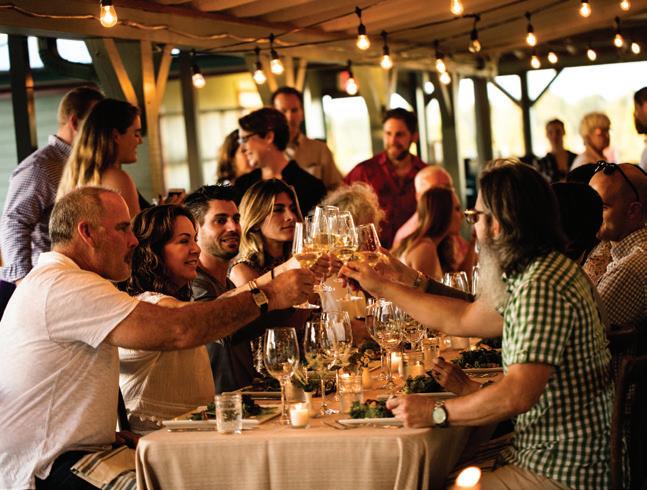
“Agritourism has always been a central part of Martin County’s DNA,” says Ian Centrone, the tourism program manager at the county’s office of tourism and marketing.
At the turn of the 20th century, Jensen Beach had earned the name of Pineapple Capital of the World. The first pineapple slips were planted in 1881, and by 1902, the community shipped more than 1 million boxes of pineapples each summer.
But farming is not for the faint of heart, and the pineapple farms were all but wiped out by the 1920s thanks to cold snaps.
Citrus groves faced the same challenges, as well as disease. However, Martin County farmers persevered, and today
they bring more than $100 million to the county annually by growing citrus, tomatoes, potatoes, sweet corn and other crops.
Tough times actually led to the creation of Shadowood Farm in Palm City. Sarah and Bob Fenton owned a native nursery and garden center, then pivoted to a farm during the Great Recession of 2008. The couple converted their nursery beds into raised garden beds, and today, they sell hundreds of herbs and vegetables – a list of selections
so large it’s easier for the Fentons to share what they don’t grow.
“The trend is skirting toward hyperlocal, small, family-owned and -operated farms that are able to focus on a niche,” Centrone says.
Shadowood is Real Organic Project certified and sells produce directly to the public. Their verified regenerative farm uses solar power and a minimal amount of water, and the couple also composts.
“If there’s going to be any type of healthy planet in the future,
everybody has to do their part,” Sarah says.
Carl Frost and Diane Cordeau spent a decade living on a sailboat, sailing 30,000 nautical miles around Australia and New Zealand. In 2003, they returned to land and founded Kai-Kai Farm in Indiantown. The farm started with just a quarter of an acre but has since expanded to 40 acres.
They paid homage to their time at sea with the name of the farm. Near the Solomon Island village, chiefs and tribe members would paddle up to their boat and ask if they cared for “Kai-Kai,” which they learned meant to gather food or have food together.
In 2012, they introduced the popular farm-to-table dining events, where the public enjoys a dinner by top chefs using a selection of the 80 kinds of produce grown at the appropriately named Kai-Kai Farm. The wine pairing and demonstration dinners became so popular that Frost and Cordeau were able to build a 150-person dining hall –an upgrade from the 50-person greenhouse space. Kai-Kai also offers a Saturday farmers market and a CSA program.
“Nobody knew who we were, and we almost had to beg for business,” Frost laughs about the early days. “It’s not the case anymore.”



But even if they’re not at Kai-Kai Farm, diners in the region have probably eaten their goods. The farm’s produce and herbs are used at restaurants like The Butcher’s Club at PGA National Resort, The Regional, Buccan, Jupiter Yacht Club and many others.

From farms like Shadowood and Kai-Kai Farm, the spirit of agritourism seeps into community
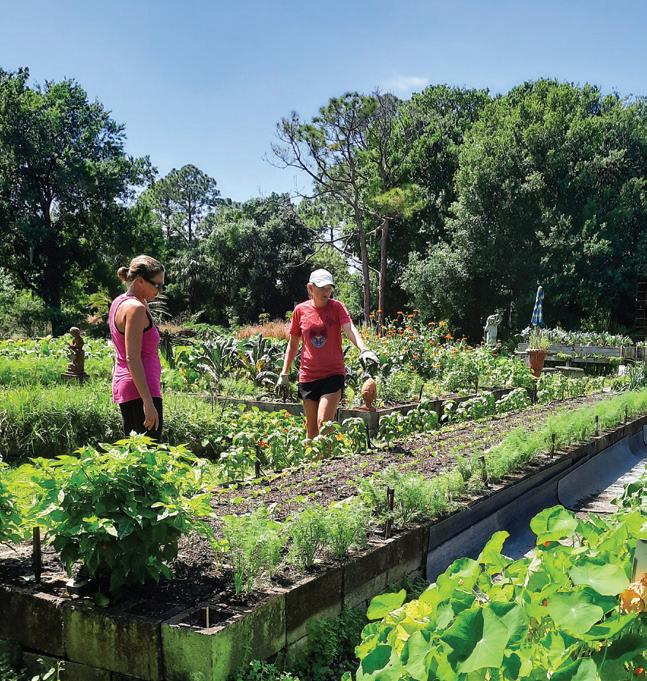
events, including Stuart’s Market on Main, a yearlong farmers market; the Rockin’ H Ranch Fall Festival Extravaganza in Palm City; and the Winter Vendor & Craft Fair at the Martin County Fairgrounds.

“Martin County has that rural, rustic charm, but it taps into the old Florida vibe that you don’t really find in Florida too often,” Centrone says. “We love sending people out to the farms for a unique experience and a creative way to make the most of your Martin County vacation.”
Every pepper, head of lettuce and tropical fruit purchased from a farmer makes a difference to those who spend morning until night working the land.
“One person makes a huge impact,” Sarah says. “Every person that makes an effort to shop at a local farm makes a huge difference to that farm’s bottom line.”
– Christiana LillyKai-Kai Farm
Location: 8006 SW
Kanner Highway, Indiantown
Phone: (772) 597-1717

kaikaifarm.com






Shadowood Farm
Location: 6220 SW Martin
Highway, Palm City
Email: shadowoodfarm@ gmail.com

shadowoodfarm.com
To plan your trip, check out the Discover Martin website at discovermartin.com
Martin County





Arcadia Stockyard arcadiastockyard.com
Atlantic Sapphire atlanticsapphire.com
Duda & Sons, Inc. duda.com
Everglades Equipment Group evergladesfarmequipment.com
Florida Ag in the Classroom faitc.org
Florida Citrus Mutual flcitrusmutual.com
Florida Dairy Farmers floridamilk.com
Florida Department of Agriculture and Consumer Services fdacs.gov
Florida Farm Bureau floridafarmbureau.org
Florida State Fair Authority floridastatefair.com
Florida Tomato Committee floridatomatoes.org
Florida Watermelon Association flfwa.com
The Mosaic Company mosaicfloridaphosphate.com Port Tampa Bay porttb.com
R.C. Hatton, Inc. rchattonfarms.com
Southern United States Trade Association susta.org
Sunshine Sweet Corn Farmers of Florida sunshinesweetcorn.com
TKM Bengard Farms, LLC tkmfarms.com
University of Florida – IFAS Extension ifas.ufl.edu



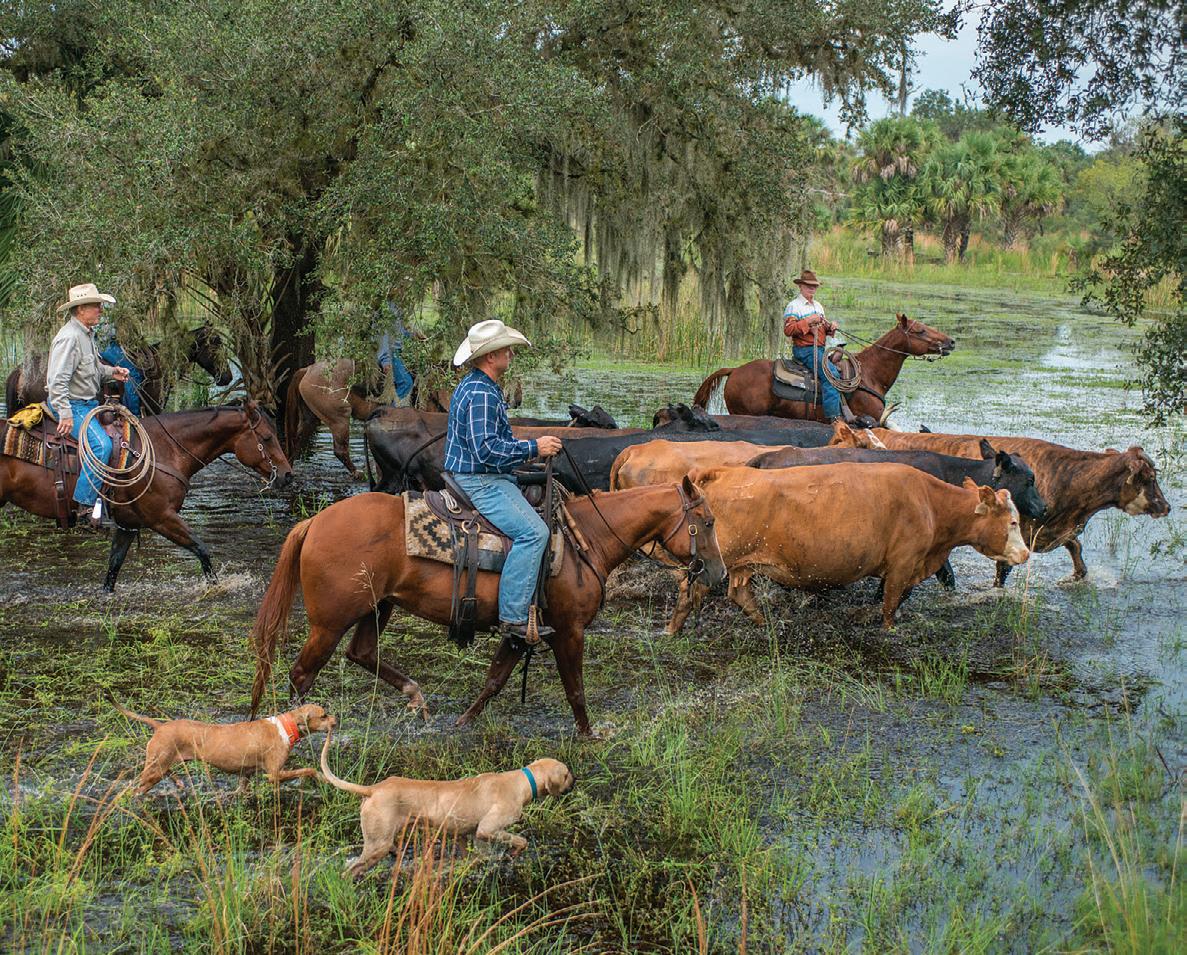
When savoring local surf and turf with a fruit or vegetable side, remember the Florida farmers, ranchers and fishermen whose hard work and dedication make it possible. While their workplaces vary, the following producers make it their mission to sustainably serve their customers, the economy and the environment.
For fifth-generation Florida rancher Doyle Carlton III of Roman III Ranches in Wauchula, self-education is key to adopting Best Management Practices for sustainability.
“My dad and granddad taught me your cattle and land will take care of you if you take care of them,” Carlton says. “Their learning wasn’t from the books; it was through self-education.”
Seven generations of Carltons have ranched in Florida. Currently, the Roman III Ranch spans over three counties – Hardee, DeSoto and Highlands – and consists of cow-calf operations and citrus production.
A winner of the Farm Bureau CARES Award and the Farm Credit Leadership Outstanding Rancher and Leader Award, Carlton’s proud of the recognition, but more so of the positive practices that led to it.
“My goal is to leave the land better than I found it,” he says, but he also admits it’s hard to keep a sizeable ranch intact these days.
Some ranchers have adopted conservation easements, and many more are considering them. Carlton placed part of his ranch in Highlands County in a Wetlands Reserve Program (WRP) Conservation easement. This easement is a voluntary program for restoration and protection of wetlands and private property, ensuring the land is never
commercially developed. In return for the WRP Conservation easement, technical and financial assistance is provided. In DeSoto and Hardee counties, Carlton recently placed part of the ranch acreage into a Florida Forever easement with the Florida Division of State Lands and Southwest Florida Water Management District.
All work on the non-easement areas of the ranch is done in an environmentally conscious manner as well.
“Everything we do involves making the best choice to balance our cattle operation and our wildlife program,” Carlton says.
Florida’s landscape and cattle
ranching history intertwine throughout the state, thanks to ranchers like Carlton who make it a priority to maintain the land through environmentally sustainable ranching methods.
“We need the ranches to maintain the landscape, green spaces and environment,” Carlton says.
“Without cattle ranches, we simply wouldn’t have the beauty of the countryside we do now.”
Healthy fisheries are vital to Florida’s commercial fishing industry, says David Krebs, owner and CEO of Ariel Seafoods, which has fish houses in Destin and Sebastian.

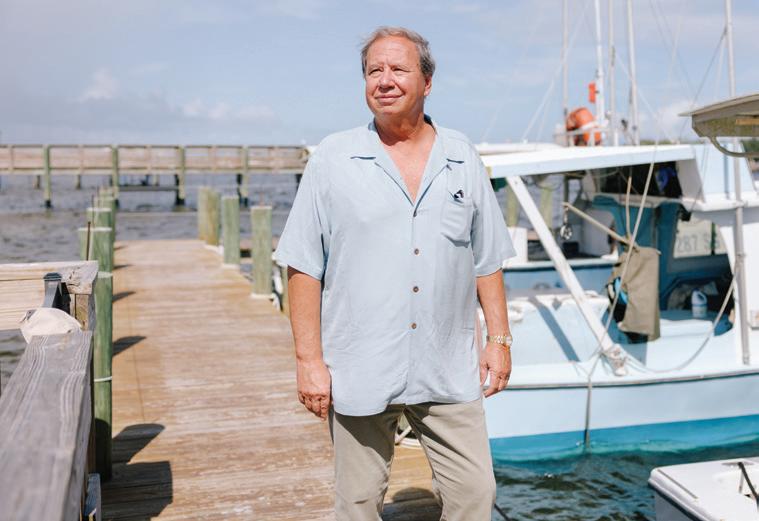
“Whether tourists come here for golfing, beaches or Disney, most are coming to eat fresh Florida seafood,” he says.
Ariel Seafoods helps tourists and residents alike who are striving to eat and buy locally. As a wholesale fish company, they buy directly from boats fishing in the south
Atlantic Ocean and Gulf of Mexico. Then they package and distribute the fish to wholesalers, retailers and large-volume consumers.
In 2011, Ariel Seafoods established FishTrax Marketplace as a way for consumers to learn where their fish came from via QR codes assigned to the catch.
Ariel Seafoods offers red snapper, vermilion snapper, Spanish mackerel, king mackerel and red grouper, all sustainably managed and responsibly harvested.
The key to ocean sustainability is twofold: eliminating waste and increasing education.
While regulations limit catch
poundage and fish length to prevent overfishing, Krebs says commercial fishing differs from other forms of agriculture because the waters must be shared with charter and private fishers. Therefore, sharing resources is essential for all.
“Seafood is a limited resource,” Krebs says. “Having full accountability of all harvest is paramount to properly manage stocks.”
NASCAR drivers Chad and Ross Chastain are eighth-generation farmers whose JDI Farms near Fort Myers supplies watermelons to
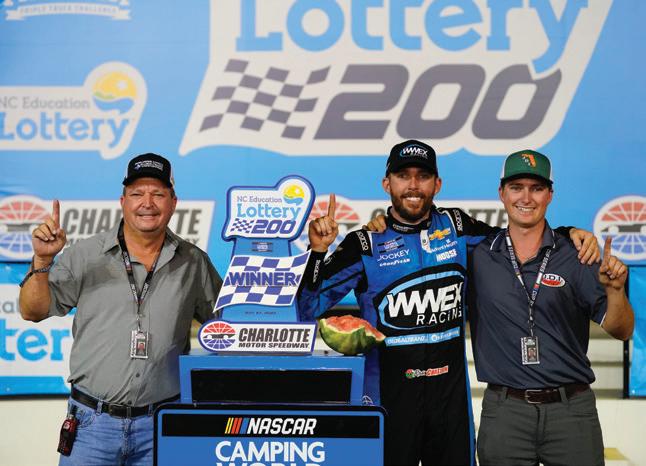
major East Coast grocery retailers.
“We grow 400 to 500 acres, and during April and May, we harvest 18 to 20 million pounds of watermelon,” Chad says.
When Ross Chastain first busted a watermelon in a race victory celebration, he thought his grandfather would call it wasteful. Instead, his grandfather recognized it as an ambassador opportunity –the farm literally sowed the seed for racing – and a tradition was born.
While Chastain may be a name synonymous with watermelons today, it wasn’t always. Previous generations raised crops from cabbage to citrus.
“My grandfather remembers plowing with a mule before my great-grandfather bought a tractor,” Chad says. “Two generations later, our farm is among the largest watermelon producers nationwide.”
Sediment ponds help prevent run-off and protect groundwater, and efficiency with fertilizer application also helps with sustainability efforts on the farm.
“Watermelons need specific nutrients, but the soil here can change across fence rows,” Chad Chastain says. “That’s why we routinely pull soil samples – to prevent over-fertilizing. We want to apply only as much fertilizer as necessary.”
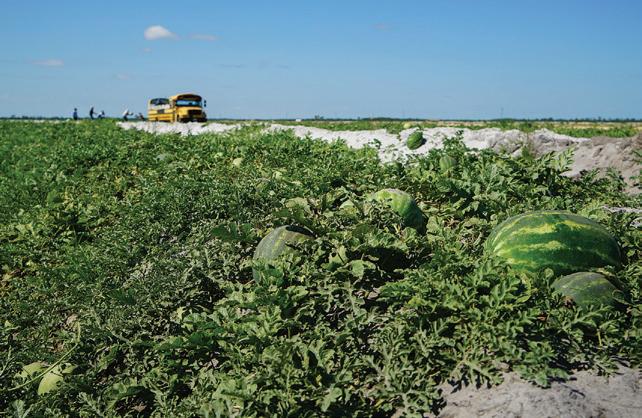
If consumers want to practice sustainability and reduce waste on their end, Chad recommends buying whole fruit instead of prepared fruit in single-use plastic containers.
“People think they’re being wasteful to buy a whole watermelon and not eat it all, but watermelon has a long shelf life,” he explains. “The natural waste deteriorates and replenishes the land. Plastic doesn’t.”
Continuing the family farming tradition and incorporating sustainable practices make the younger Chastains proud.
– Tracey Hackett
There may be nothing that says Florida quite like a fresh, sweet, juicy orange. The fruit is synonymous with our state. You see it on the state license plate. Orange blossom is recognized as the state flower, orange juice is the state drink and orange is the state fruit. Citrus has been both a valued contributor to the state’s economy and a point of pride to Floridians.
The fruit has a long and juicy history, beginning in the early 1500s when Spanish explorers, likely Ponce de Leon, planted orange trees near St. Augustine.


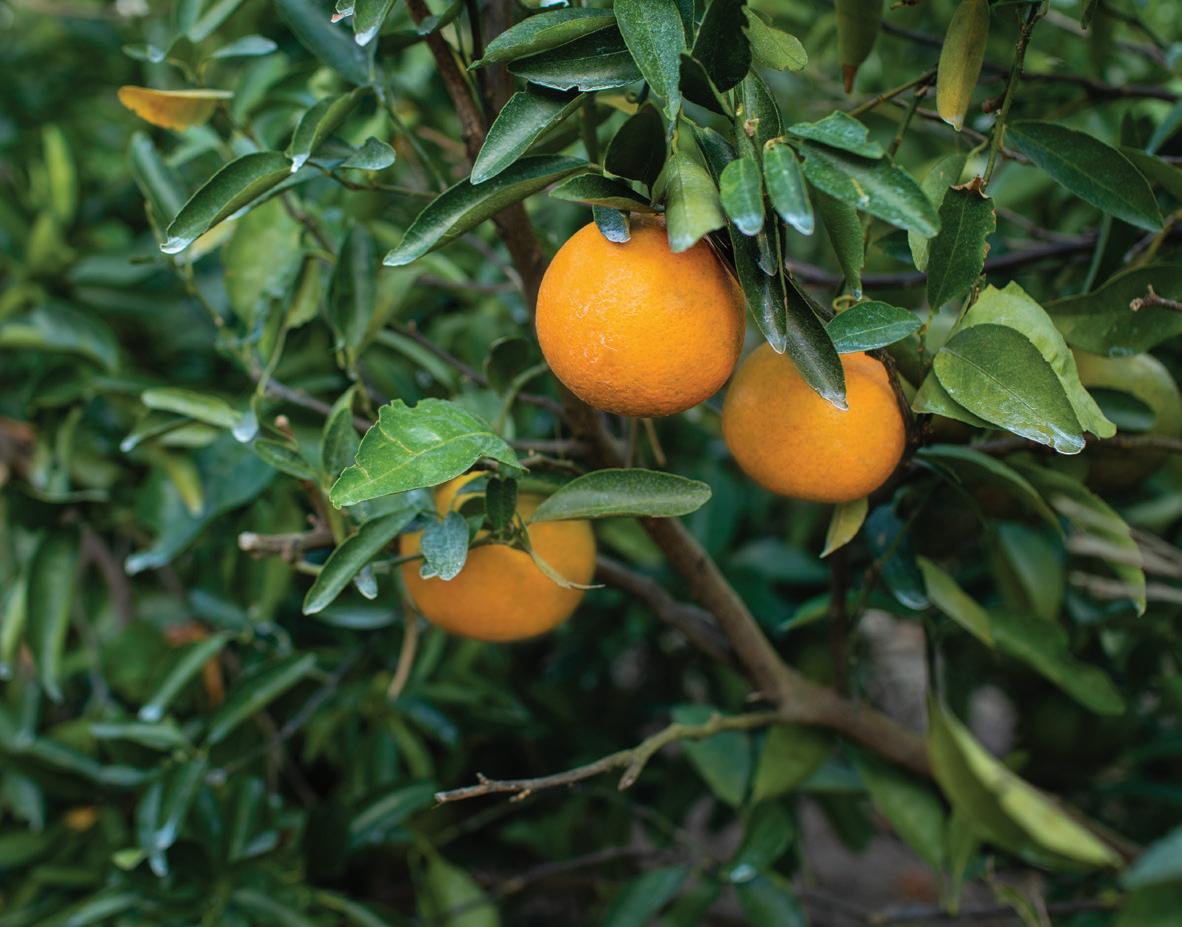
“But it really wasn’t until the 1820s that the industry started to expand to commercial plantings,” says Matt Joyner, executive vice
president of Florida Citrus Mutual, a trade organization of citrus growers. “Fresh fruit packing houses began to be built in the 1910s, but as growers began to experience more freezes, the industry moved further to the south of the state. Then, with the invention of frozen concentrate orange juice, the industry started to explode.”
That explosion was a boon to Florida’s economy.
“In its heyday, the industry was responsible for upwards of $9 billion in economic activity,” Joyner says. “While weather, pests and disease have created many challenges for growers, the citrus industry continues to be a powerful economic engine for the state,



accounting for about $6.7 billion in economic impact.”
The industry provides environmental benefits as well.
“The 400,000 acres of citrus groves create an extensive habitat for 159 species of native wildlife and keep that land out of development,” Joyner says. “The groves also enhance the air we breathe since mature trees produce 16 tons of oxygen per acre.”
Today’s growers are resilient, Joyner says, and proud of the economic and environmental impact of their work. They address the challenges head-on through breeding research, new growing systems, unique variety production and innovation.
Cathy Lockman–
A LOOK AT THE PAST, PRESENT AND FUTURE OF FLORIDA’S FAMOUS FRUIT
Ensuring a high-quality product for the consumer and a promising future for the industry requires creative thinking, a commitment to research and the ability to pivot.
Based in Winter Haven, the century-old, family-run Noble Citrus is one of many fresh fruit growers across the state doing just that. The third generation of the Roe family
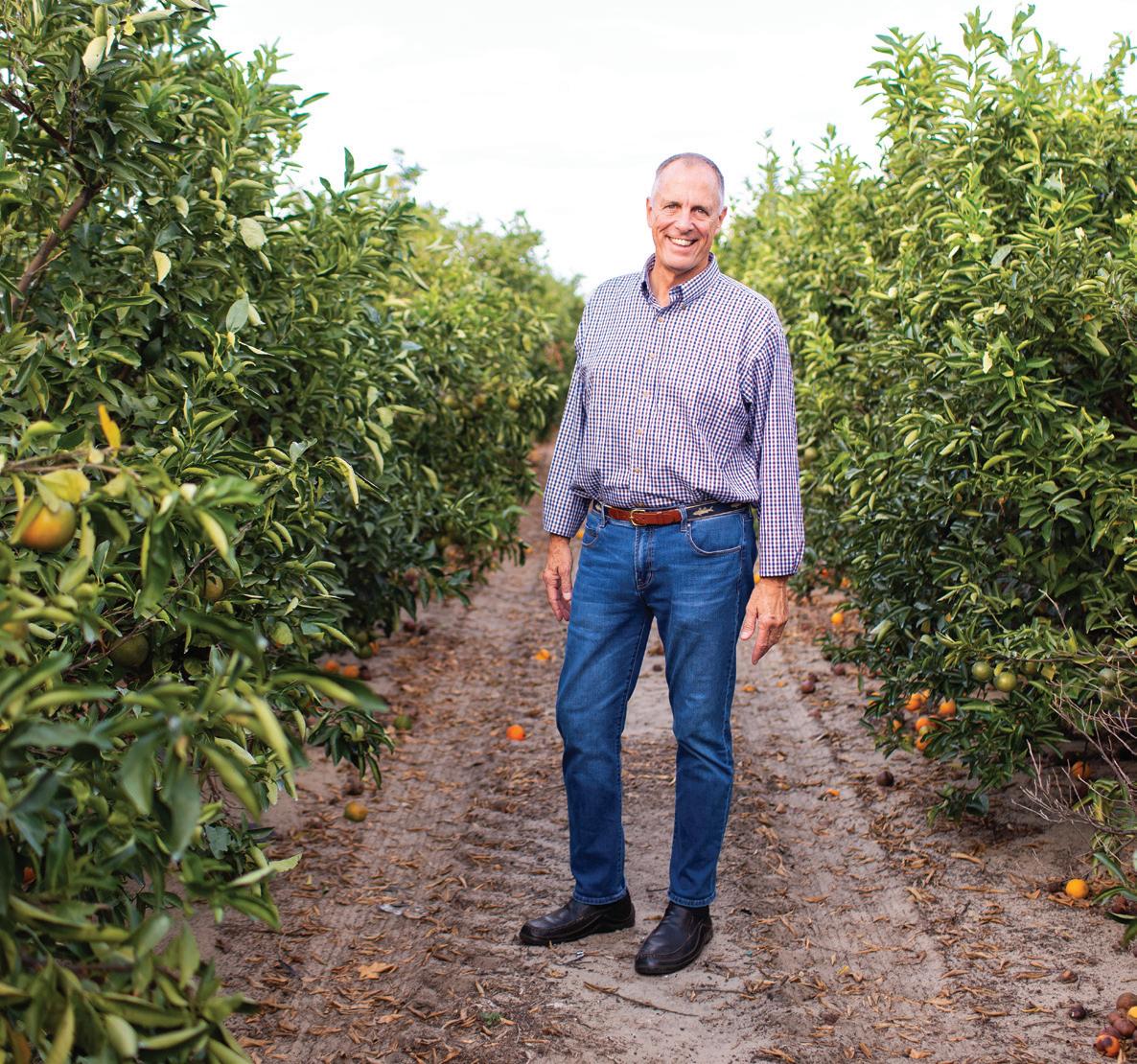
sold their juice business to focus on breeding a new, flavorful, easy-topeel tangerine with few to no seeds, as well as pummelos and other seedless citrus.
“I was visiting a customer
in New York City in the early ’80s to sell our seedy Florida tangerines, and he showed me a tangerine from Spain,” says Quentin Roe, president of Noble Citrus. “It was a beautiful fruit that had great flavor, was seedless and came in cute cartons with a net over it. No one had yet heard of Spanish clementines, but it was obvious to me we needed to pivot to produce a seedless tangerine if our operation was going to survive. But we couldn’t just try to grow Spanish clementines in Florida soil;
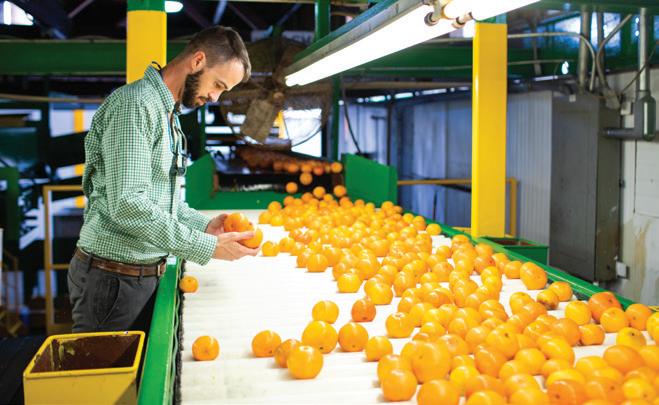
we had to do something innovative.”
And that’s what the Roe family did. Roe’s sister, Martha Burke, ran a tissue culture lab where she conducted advanced plant breeding research for gerbera daisies and philodendrons. She took on the challenge of breeding a new type of tangerine.
“We did something really unique,” Roe says.
Roe explains they bred first for grower characteristics: Was the fruit uniform? Did it fruit consistently?
Was it free of the diseases of the day? This process alone took nine years.
Next, they focused on consumer characteristics: Does it look and taste good and peel easily? Is it low seed? Can it hold up in transportation?
Over 40 years, this patient, persistent, research-based approach has produced not only Juicy Crunch –what Roe calls “the best tangerine in the world today” – but other citrus products, including Autumn Honey, New Generation Florida Tangerines and the Florida Starburst Pummelo.
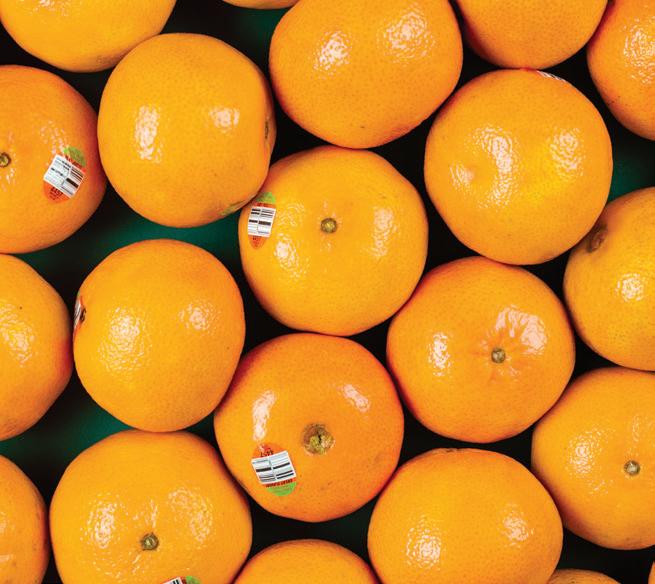

In the 1990s, Mack Glass also needed to be innovative. His family had been producing row crops on their Marianna farm for 100 years, but water issues and a predicted decline in traditional row crop production in the Panhandle led him to consider diversification.
“These challenges were real, and I wanted to get ahead of them,” Glass says. “I was looking for a niche crop that we could produce and market, and I knew that satsumas had been produced in Jackson County in the early 1900s, so the climate and the soil were right. We did some research on the economic feasibility and planted our Cherokee Satsumas in March of 2002.”
It didn’t take long for the grove of 600 trees to be tested, as temperatures hit 13 degrees in the grove in January 2003.
“We had designed the grove with microjet irrigation, which also provides freeze protection,” Glass explains. “We didn’t lose a tree that year or since then.”
The growing process has been
a success for Glass, and so has the reintroduction of the Cherokee Satsuma to the market. He explains that this seedless mandarin is sweet and easy to peel, making it a hit with children and school nutrition programs, which has become Glass’ market.
The satsuma’s flavor is winning over customers, and its hardiness is winning over growers.




“We are seeing a great deal of growth in this industry and have established the Cold Hardy Citrus Association to support the efforts of our growers and to identify other varieties we can grow in this area as well,” Glass says.
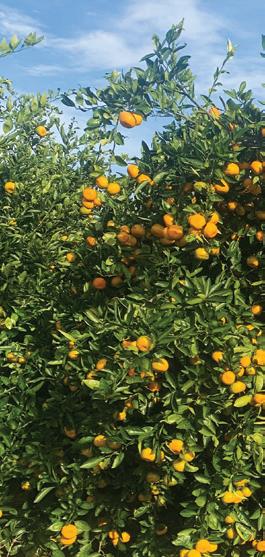











of sales at IMG Citrus, explains that while white grapefruit has always had a following, red grapefruit became increasingly popular over the last few decades.






“Four years ago, we bought an existing grove of white grapefruit in Indian River County, which is known to produce the best grapefruit in the world,” she says. “While white grapefruit was being exported mostly to Japan in the last 30 years, we decided to reintroduce it in the U.S. market under the brand Hellos with imagery that enhances the Florida origin and the postcard dream of Florida beaches during the winter months.”
Customers agree on the taste and are happy to see white grapefruit back on their plates.


as Hellos, is one of several









IMG Citrus in Vero Beach has also found great success reestablishing a fruit that was the original grapefruit variety introduced to the state in the 1800s. The white grapefruit, which IMG Citrus markets as Hellos, is one of several popular citrus products grown by the company.
Sydney Allison, director
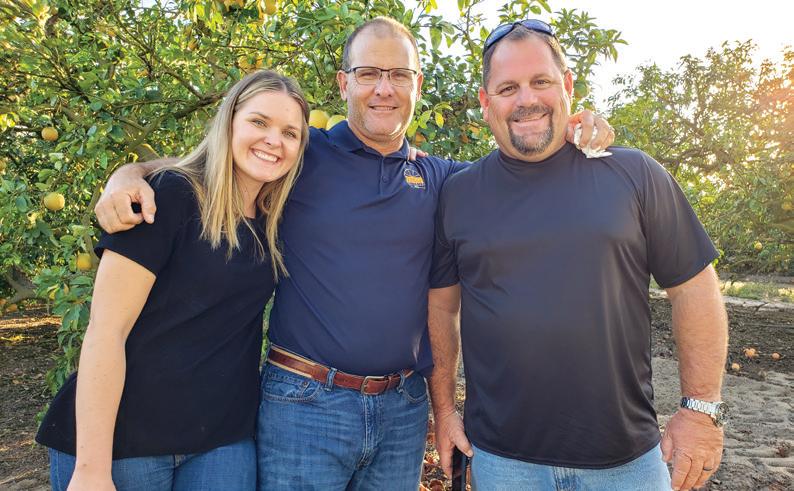
“All the trees in this 1,107-net-tree acres of groves are over 30 years old, which is important because the older the tree, the better the taste and quality of the fruit,” Allison explains.
Hellos are available from November to May. Most are shipped to the East Coast, with a growing market on the West Coast as well. Allison predicts a bright future for these and other IMG Citrus products.

“Hellos is an exceptional variety, and because our trees were planted prior to the onset of citrus greening, they have a strong foundation, which bodes well for future fruit production,” she says.
While citrus greening has been a real challenge for the citrus industry, Allison says it’s also been an opportunity.
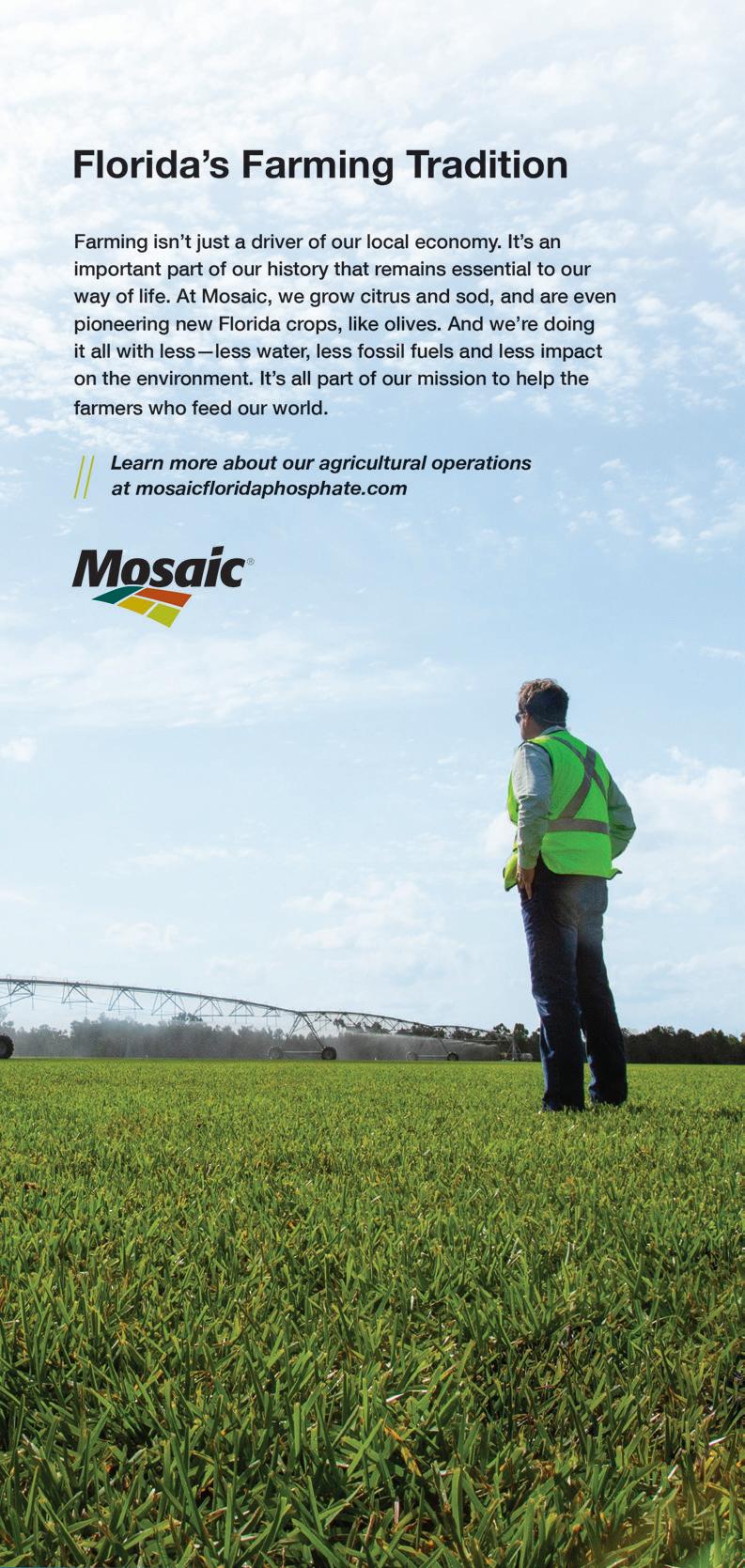
“By tackling these challenges, we’ve become better growers because we focus on the overall health of every part of the tree,” Allison says. “We are committed to environmentally sustainable practices that are essential to ensuring the future of the citrus industry.”
– Cathy Lockman PHOTOS, CLOCKWISE FROM BOTTOM: IMG CITRUS (1-2); CHEROKEE SATSUMASR.C. Hatton Farms is known for fresh sweet corn, green beans, cabbage and sugar cane. But more than the highquality produce they provide, R.C. Hatton is also known for its familyoriented values, honest business practices and cutting-edge ideas.
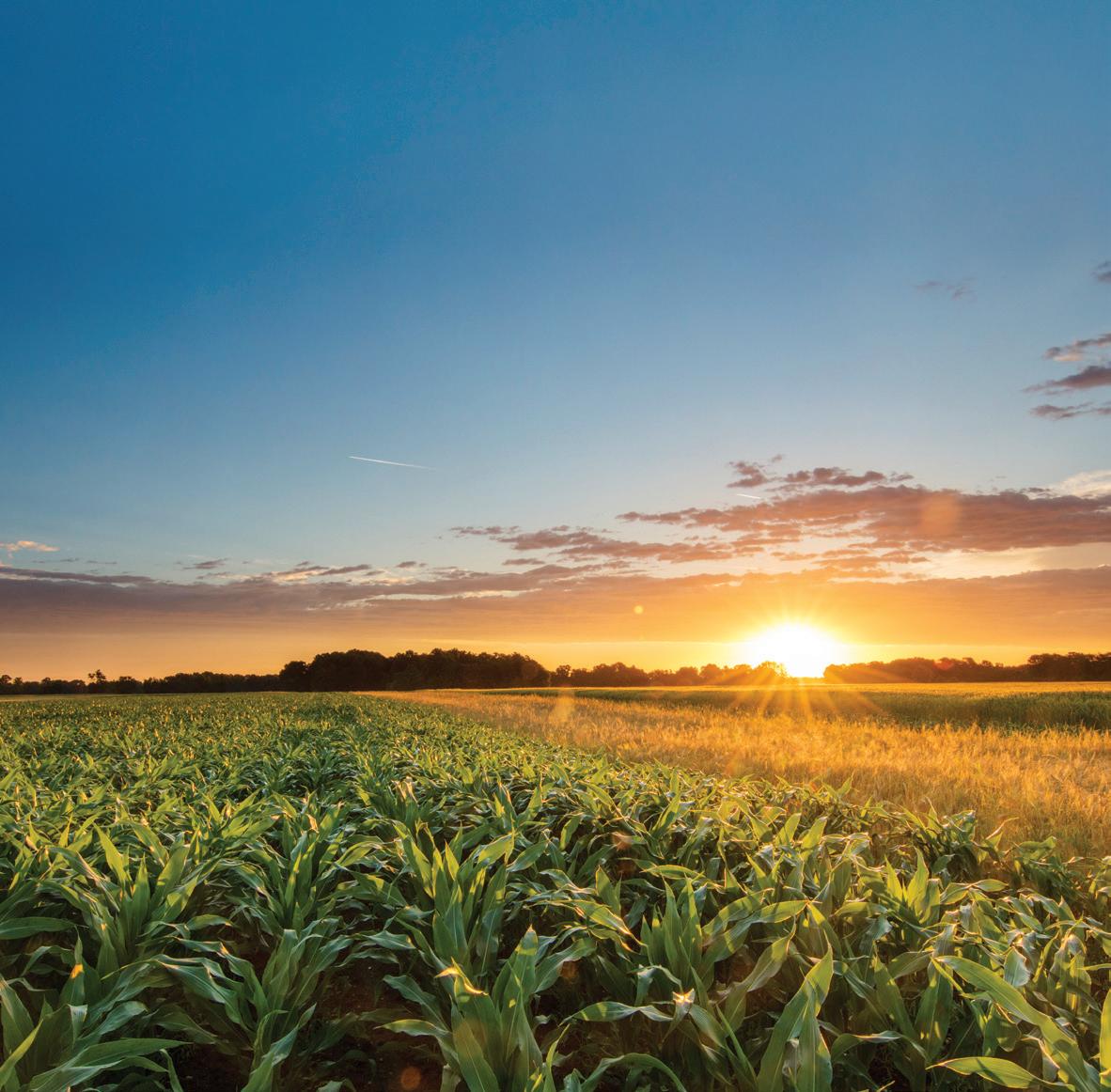
Co-owner Roger Hatton was a bold leader, known
for pushing the envelope of agricultural innovation. He passed away on May 6, 2022, at the age of 77.





“Roger was famous for little sayings that I have embedded in my mind and heart; I fall back on them often,” says co-owner Paul Allen. In addition to the produce business, Hatton and Allen branched into Napa Auto
Parts stores as well.
“He always supported me and my ideas,” Allen continues. “When I brought the idea of getting into the Napa Auto Parts business, he wasn’t that excited, but I was. He supported me even when things were tough in the beginning. We started with three stores and, with his encouragement, we now
have a chain of 17 stores in South Florida.”


Hatton’s father founded R.C. Hatton Farms in Pahokee during the Great Depression with sweet corn. When the younger Hatton took over in the 1960s, he became the catalyst for growth, seizing opportunity and incorporating technology into the business.

R.C. Hatton Inc. has always been innovative with its methods and business practices.
He was one of the first to incorporate innovative growing methods, including aerial pest control, and was continually progressive in all aspects of the business. He took advantage of the sugar cane boom in the 1960s and brought the crop to R.C. Hatton Farms – a move that helped them grow 10 times their size.

With this growth, Hatton knew that packaging and shipping
were important elements, and he used R.C. Hatton’s partnership with Hugh Branch, founder of the shipping and marketing company, Branch. Since 1957, Branch has been the sole shipper for R.C. Hatton.

“Over the years we have tried so many different ideas that Roger came up with,” Allen says. “Some didn’t work, and others we’re still using. It’s the one out of 10 that hits
and makes a difference on your farm or even maybe an industry.”
John Hundley, president of Hundley Farms in Loxahatchee and a 2021 inductee in the Florida Agriculture Hall of Fame, agrees that Hatton was a trailblazer.
“Roger was a forward and sometimes out-of-thebox thinker,” Hundley says. “He was often ahead of most everyone else in adopting new or improved
agricultural practices.”
In addition to growing the company to one of the country’s premier produce farms, Hatton was committed to the family legacy of the farm, caring for his employees and driving change that provided a more comfortable work experience.

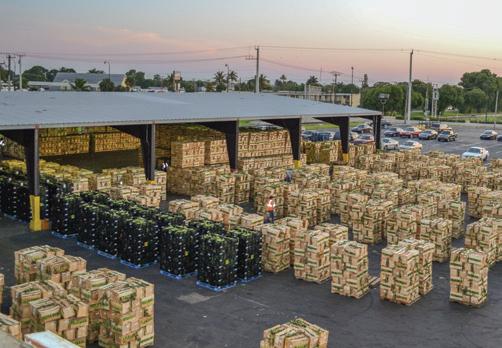
There’s no doubt that although Hatton has passed, his contributions to R.C. Hatton will remain paramount.
“We will always be looking to have new ideas but, most importantly, we will continue to realize our farm’s efforts are about our teammates that we serve and giving back to our communities,” Allen concludes.
“We will always be looking to have new ideas but, most importantly, we will continue to realize our farm’s efforts are about our teammates that we serve and giving back to our communities.”
- Paul Allen, co-owner
If variety is the spice of life, it also contributes to the continuing success of Florida agriculture. Farmers, extension agents and researchers play vital roles in adding artichokes, blackberries and finger limes to Florida’s ag offerings.
Most American-grown artichokes come from California. Its climate mimics the moderate winters and low humidity of the Mediterranean, where artichokes originated.
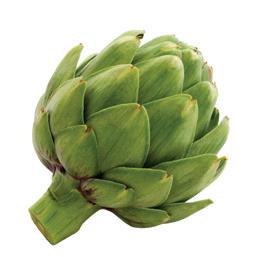
“We’re pushing
environmental barriers by attempting to produce artichokes here, but North Florida seems like an ideal opportunity,” says Evelyn “Prissy” Fletcher, St. Johns County commercial agriculture extension agent.

Her work was started by Dr. Shinsuke Agehara at Wimauma’s Gulf Coast Research and Education Center (GCREC).
Of several varieties grown, a curb appeal test at St. Augustine Amphitheatre Farmers Market revealed the top yielding was also the most visually appealing.
“This variety was donated to local restaurants for flavor feedback, and we had positive remarks,” Fletcher says. “I’m thrilled with that feedback from local chefs and the
growing demand by consumers.”
Fletcher won a National Association of County Agricultural Agents award for her work and continues honing pest management methods while offering nutrient management advice and production plans.
Florida-grown artichokes ultimately mean they’ll be fresher for chefs and consumers alike.
“That’s important for those of us who pride ourselves on supporting local agriculture and seasonably available produce,” Fletcher says.
While Florida may be synonymous with citrus, finger limes are new to the state’s citrus offerings.
“Finger limes are a specialty crop, and we’re one of a few producers,” says Tamer Harpke of Harpke Family Farm in Fort Lauderdale.
The fruit’s popularity as a garnish for cocktails, desserts, seafood and more could increase demand as more local chefs discover its uses.
“Finger limes are unique, filled with juice vesicles often called lime caviar,” Harpke says. “Ours come in four colors – clear, green, pink and red – all with slightly different flavors. That variety and vesicle size differentiate ours from others available in the U.S.”
The farm encourages patronage of restaurants that support Florida farmers.
“We’re a chef-driven farm, growing produce for chefs who prioritize sourcing local,” says Harpke, whose farm also grows microgreens and edible flowers.
Although not its only crop, Harpke’s finger lime orchard represents the farm’s first foray into citrus growing.

The family incorporates natural techniques throughout their farming practices. Consulting University of Florida researchers, Harpke Family Farm uses beneficial nematodes, weed mats and drip irrigation on its finger limes, and they do not use pesticides.
While pest and weed management present challenges, research shows finger limes, more than other varieties, resist citrus diseases like greening. Harpke says their partnership with University of Florida researchers has been instrumental in their success.
Another GCREC researcher, Dr. Zhanao Deng, studies ways to take blackberry crops statewide.
“We work on blackberry genetics, plant management techniques, pest control and more to make the blackberry a productive
crop statewide,” he says.
Funded by the U.S. Department of Agriculture, the Florida Department of Agriculture and Consumer Services and the University of Florida SEEDIT grants, research focuses on two aspects: trials of cultivars developed outside the state and the creation of new cultivars. Both are essential because blackberry challenges vary statewide.
“Heat, especially warm winters with few chill hours, is the biggest barrier in Central Florida,” Deng says. “In North Florida, where winter is cooler, frequent rains make berry harvest difficult.
Bright sunlight can also cause damage to berries.”
Agehara finds urea increases budbreak and berry yield, so spraying urea benefits blackberry production in Florida.
“Farmers have made good stewardship efforts from the beginning,” he says.
North Florida already has more than 100 acres in production.
“Blackberries are a superfood,” Deng says. “Consumer demand is high, and prices are good. Our greatest advantage is being able to harvest and ship ripe berries before other growers in the continental U.S.”
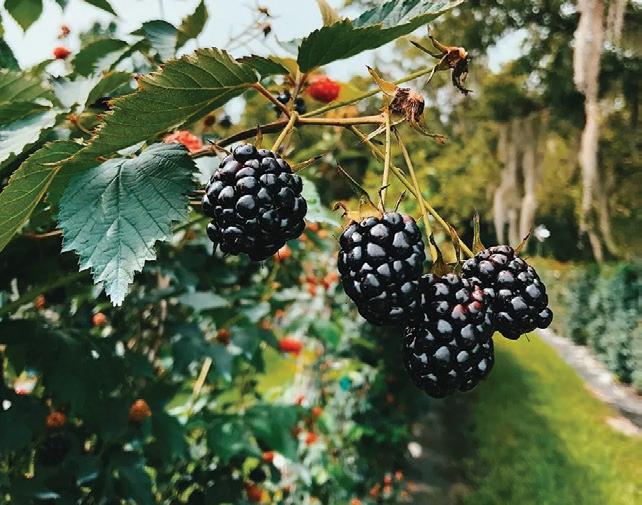 – Tracey Hackett
– Tracey Hackett
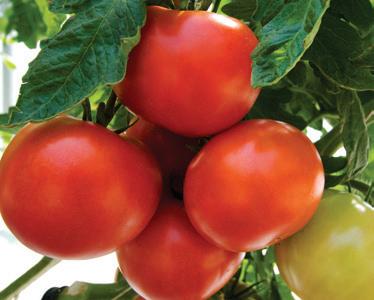
While the early pandemic triggered supply chain issues and empty grocery shelves, it also boosted awareness of local farmers, U-pick operations and community gardens.
Many Floridians, however, are unaware of the science behind the ever-improving agricultural industry that puts high-quality food on tables across the state while protecting our natural resources.
“What surprises people is how
much science helps deliver the affordable, safe, abundant and tasty food they eat, and how that science supports such a wide scope of the business of agriculture,” says Scott Angle, senior vice president of agriculture and natural resources at the University of Florida Institute of Food and Agricultural Sciences (UF/IFAS). “We support agriculture in ways large and small, but the complexity of the industry is difficult to comprehend.”
UF/IFAS has a mission to improve food by growing it more efficiently, improving its nutritional value, making it taste better, getting it to market and protecting the environment that supports it.
UF/IFAS plant breeders are developing drought-tolerant, pestresistant crops. Nutritionists lead statewide programs to help Florida residents eat healthier. Scientists study plant genes, ultimately paving the way for produce that stays fresher longer and reducing food waste. Extension specialists help farmers stay competitive and provide support for entrepreneurs who launch their own food businesses. The College of Agricultural and Life Sciences, also part of UF/IFAS, prepares the next generation
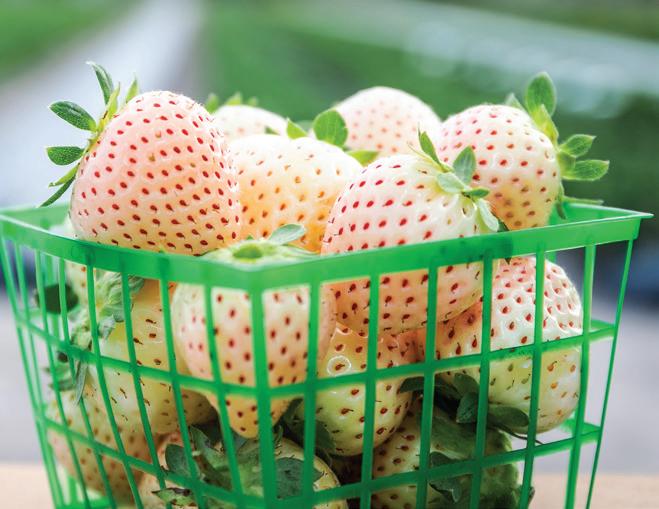
to develop innovative solutions to feed a growing world population.
One of the Institute’s most recent success stories is the development of a white strawberry, sometimes called a pineberry because of its pineapple aroma, which is the first of its kind to go to market in the United States.
UF/IFAS researchers have also created blueberry varieties that, because they grow so well in Florida, are ready for stores nationwide before those from other states, giving Florida growers a competitive advantage.
“People are starting to pick up the Food is Our Middle Name hashtag over the past few months and are connecting us more closely with the food they eat,” says Angle, noting that agriculture is the state’s secondlargest industry, with about 300 different products grown in Florida.
Thanks to breakthroughs by UF/IFAS researchers, the future of agriculture is now. One is using

artificial intelligence to help citrus growers better forecast seasonal production through cloud-based technology that determines tree characteristics such as height, leaf density and amount of fruit. The method predicts yields with 98% accuracy.

Another is working to develop an “Artificial Intelligence Connoisseur” that can detect which chemical compounds produce the best flavors in tomatoes and blueberries. Right now, scientists sample
the crops themselves, a timeconsuming approach that can pose logistical issues.
Precision agriculture will play an increasingly important role, too, automating labor-intensive work.
“Our world is growing, and we’re going to need to feed more people. How are we going to do that? How are we going to produce more with less effort?” Angle asks. “That’s what keeps us up at night, and UF/IFAS is working towards that future.”
Learn more at ifas.ufl.edu/food.
“What surprises people is how much science helps deliver the affordable, safe, abundant and tasty food they eat, and how that science supports such a wide scope of the business of agriculture.”- Scott Angle, senior vice president of agriculture and natural resources at the University of Florida Institute of Food and Agricultural Sciences
Next time you bite into a juicy ear of corn on the cob, odds are you can thank a Florida farmer. With more than 36,000 acres of sweet corn across Florida, the Sunshine State is the No. 1 producer of sweet corn for the fresh market in the U.S. Palm Beach County also ranks as the largest sweet corn-producing county in Florida.
“I think we’re the only place other than California that can grow sweet corn pretty much year round,” says Cooper Hopkins of Hundley Farms.
Located in Loxahatchee, Hundley Farms has been growing sweet corn, among other crops, since its founding in 1969. The farm started with just 400 acres of sweet corn and radishes and today has a little over 20,000 acres.
Sweet corn and sugarcane are their top products, but they’ve also diversified their offerings with green beans, rice and other crops.
“We produce over 4 million crates of sweet corn per year,” Hopkins says. “It is distributed all throughout the U.S. and even into Canada and Europe. The climate and soil here in Florida are excellent for growing sweet corn.”

Hopkins is the third generation to work on Hundley Farms, which his grandfather started. He says that along with producing quality, non-GMO crops, taking care of the land and preserving it for the next generation is of utmost importance at Hundley Farms.
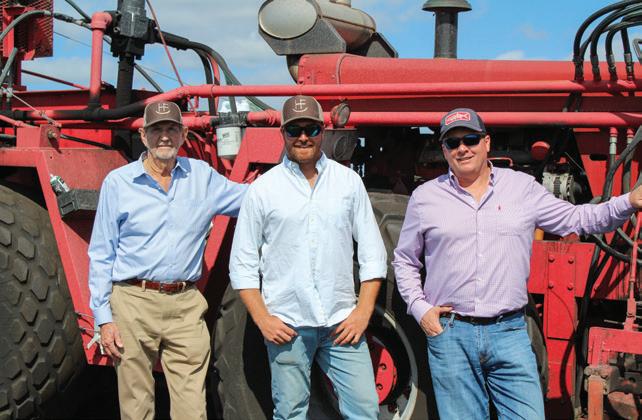
Throughout the years, they’ve put a lot of emphasis on environmentally friendly techniques and practices.
“The plan is for our farm to stay in the family, so we want to keep it as best as possible for the future,” Hopkins says.
Sustainable practices the farm integrates include crop rotation and cover crops, soil enrichment, natural pest predators and Best Management Practices for water conservation.
“We level our land so it’s flat and then use a unique irrigation system where ditches run parallel to each field. Water can percolate through the soil and go hundreds of feet
through the field,” Hopkins says. “We rarely use overhead irrigation, and this method helps save water.”
Additionally, the farm participates in the University of Florida’s barn owl nesting program, which provides natural rodent control for the crops.
Hundley Farms has won several awards for their environmental efforts, such as the 2020 4R Advocate Award from The Nature Conservancy, among others.
“We want consumers to understand what we do and how we take care of our land,” Hopkins says. “One of the biggest things is teaching people about the difference between sweet corn and field corn and the difference in how they’re grown. We offer farm tours and are part of the Sunshine Sweet Corn Farmers of Florida to help our industry through marketing and education.”
– Rachel Stroop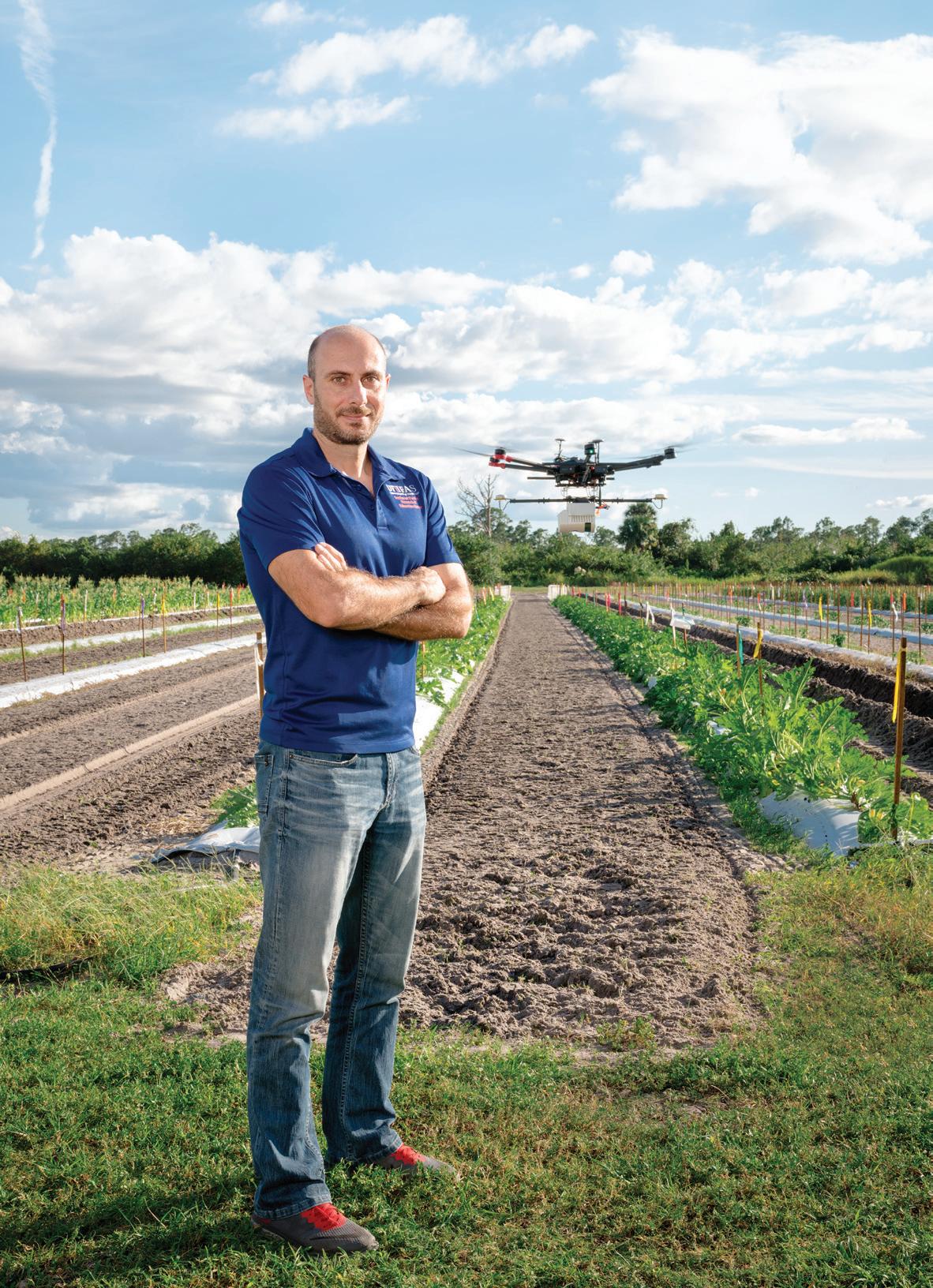







Like most other businesses, farmers are working to be more efficient and sustainable. With new technologies available, they’re making progress to ensure better yields, discover more cost-effective methods and gain a better understanding of environmental impact.
Analyzing crops in the field once took several weeks, involved lots of labor and wasn’t always accurate. Today, that work can now be completed with the quick flight of an unmanned aerial vehicle (UAV) and the use of artificial intelligence (AI) to interpret the data. As the
UAV flies over the crop, every second it snaps images that programs using AI can analyze, visualize and convert into usable information.
It does so with programs such as Agroview, one of the many AI tools created by Dr. Yiannis Ampatzidis, associate professor in the Agricultural and Biological Engineering Department at the University of Florida Institute of Food and Agricultural Sciences

(UF/IFAS). Agroview can take data and create field maps displaying plant inventories and gaps, plant canopy volume, and density within a field with up to 95% accuracy.
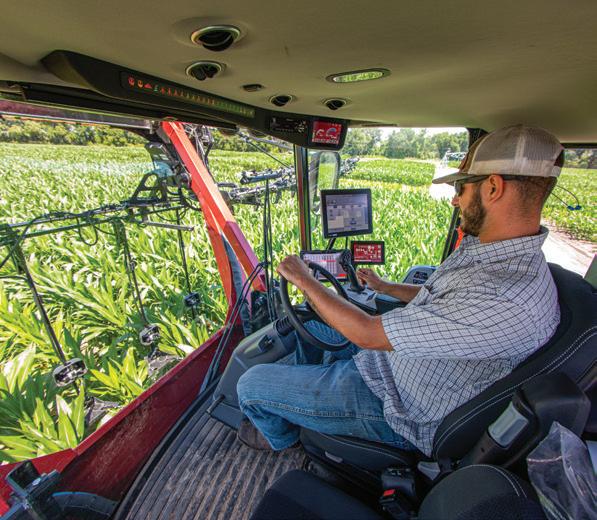
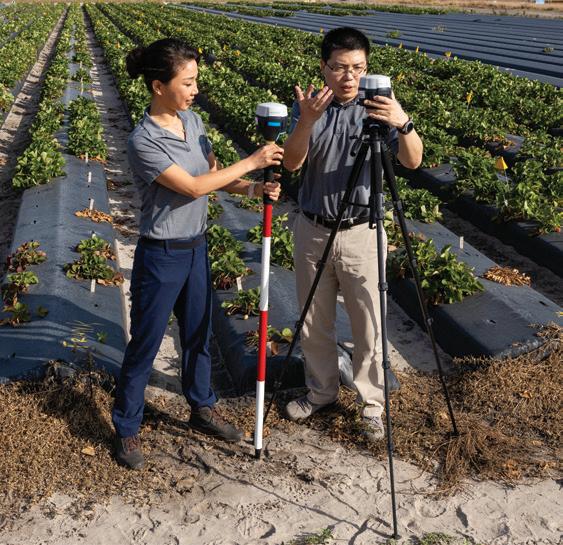
This new technology is fast on its way to eliminating the traditionally drawn-out process of manual data collection to determine soil or plant nutrients, insect pressure or even the extent of damage after a hurricane. This is important because it saves farmers time, which saves money, and it also


cuts down on nutrient and pesticide use, another cost-saving measure.
“We now have access to immediate decision making,” says Dr. Scott Angle, senior vice president for agriculture and natural resources at UF/IFAS. “When traveling through a field, you have to make a decision in seconds. A human can’t do that, but AI can.”
With labor shortages becoming increasingly common, specialty
crop growers are telling state leaders that innovative technologies are critical for their operations –or else there won’t be a future.
“We will have to rely on robots in the future,” Angle says. “If not, the day is coming when we won’t have a strawberry harvest. It’s not if – it’s when.”
Finding farmworkers has been a crucial concern for the past decade as competition with Mexico continues to increase.
One tech-driven effort to decrease
labor needs is Harvest CROO, a robotic strawberry harvester being developed by private industry with input from Ampatzidis. The harvester, which Ampatzidis describes as a “factory in the field,” uses AI to determine when berries are ripe, then picks them without damaging the plant. It can even work at night.
“It’s critical this is all very fast-
paced for our growers. They have made that very clear,” says Dr. Jack Rechcigl, professor and director at the UF/IFAS Gulf Coast Research and Education Center (GCREC).

With the university’s new initiative on AI, growers see a glimmer of hope.
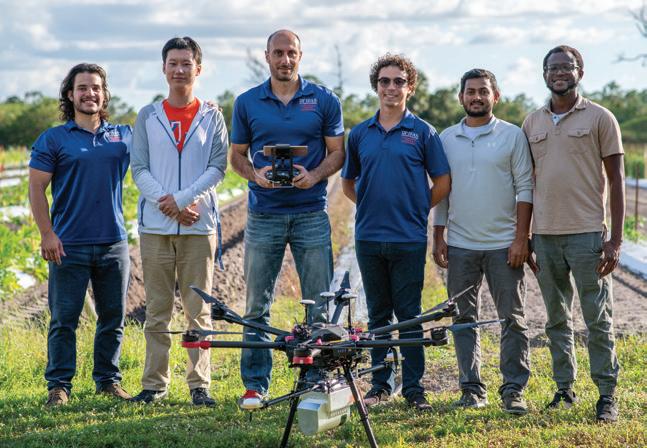
“They’re realizing AI is what it is going to take,” Rechcigl says. Under Rechcigl’s leadership, there
is a planned center for Applied AI in Agriculture in progress now at GCREC, which will focus on AI-based technologies for agriculture with an emphasis on moving technology from concept to commercialization.
Ampatzidis says Florida currently plays a major role in the fourth agricultural revolution. The development of machinery, chemicals and genetic engineering were first, second and third, respectively. The fourth takes robotics, data analytics and digital farming and puts them in the hands of the average farmer.
“AI can distinguish a weed from the crop and between different types of weeds. It sees and sprays,” Ampatzidis says.
This precision results in less impact on the environment as well as the farmer’s wallet.
“This method eliminates the need to spray the entire field and can reduce herbicide use by almost 70%,” Angle says.
Thanks to an $80 million initiative, including a supercomputer donated in part by AI technology company NVIDIA, UF now has the largest concentration of AI hardware of any university in the world, according to Angle.
The initiative brings AI education, training and collaboration to all aspects of research at the university. He anticipates this is just the beginning of making this technology accessible.
– Katie Murray AltFor more information about advanced agriculture technologies, visit ifas.ufl.edu/ artificial-intelligence
Motorists are driving up support for Florida’s agriculture industry by tagging automobiles, commercial vehicles, trailers and motorcycles with specialty license plates. When a driver orders one of more than 125 mission-specific designs available through the Department of Highway Safety and Motor Vehicles, a portion of the additional fees benefits a designated cause. Check out these six specialty plates that support local agriculture.
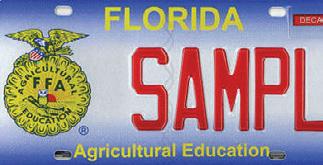
The “Ag Tag” benefits the Florida Agriculture in the Classroom program, which provides educational resources, grants and teacher professional development programs that further agricultural literacy among pre-K-12 students statewide.

Distributed through the Harbor Branch Oceanographic Institute Foundation Inc., this tag keeps aquaculture research and instructional programs afloat through collaborations with the Guy Harvey Research Institute of the Nova Southeastern University Oceanographic Center.
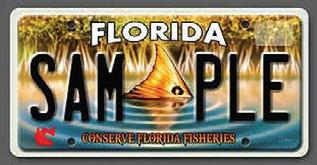

The “Redfish Tag” spotlights the Coastal Conservation Association’s work to protect and enhance saltwater marine resources. The
CCA strives to educate and engage the public in environment and habitat restoration and preservation.
Plate proceeds allow the Florida Agriculture Center and Horse Park to maintain the reins of its Marion County-based park, including essential expansion as well as improvements to barns and other horse facility needs.
Thanks to sales of this specialty plate, Florida Wildflower programs may continue to blossom through research, education and community-based programming.
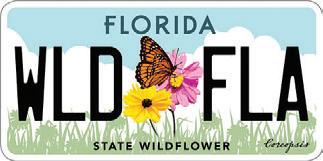
Agricultural education funds garnered from this plate support the Florida FFA Association, ensuring student and teacher leadership initiatives continue to enrich Florida’s agricultural roots.
Specialty license plates are available with standard or personalized numbers and letters. You can even gift a specialty license plate through the purchase of a gift certificate. To explore additional options supporting Florida agriculture, visit flhsmv.gov/ specialtyplate.
 – Nancy DeVault
– Nancy DeVault
What began as a high school science fair project in 1994 to create environmentally friendly rodent control has grown into a successful ecological solution in the Florida Everglades Agricultural Area (EAA).
The Barn Owl Research Program at the University of Florida first evolved when Dr. Richard Raid, a now-retired professor and plant pathologist with the UF Institute of Food and Agricultural Sciences’ Everglades Research & Education Center (UF/IFAS EREC), mentored a high school sophomore to create a natural rodent control.
“A sugarcane company donated screech owl nesting boxes, but the science fair project was unsuccessful because we don’t have screech owls in the area,” Raid says.
Teaching the student that sometimes you learn more from your failures than from your successes, Raid and the student conducted further research and shifted to barn owl nesting boxes the following year.
“The student won the state prize in the science fair environmental category and third place in the international science fair that second year after discovering that barn owl nesting boxes create a
natural rodent control,” Raid says.
Nearly 30 years later, the project has grown from helping one student to teaching hundreds about agriculture, biology and technology. The Barn Owl Research Program now partners with youth organizations and schools to build nesting boxes for farms.
“We get the wood, cut it to size and take it to a group of children so they can build boxes,” says Ann Hartman, agriculture assistant supervisor at UF/IFAS EREC.
Teaching and inspiring children is now a significant part of the
program. “It’s the part I’m most passionate about, and I believe if we can inspire just one child to go into science or agriculture by building barn owl nesting boxes, then it’s worth it,” Hartman says.

Today, the Barn Owl Research Program has nearly 1,500 nesting boxes in use in the EAA, providing for some of the highest barn owl densities in North America.
Barn owls (Tyto alba), named originally because they nested in barns, can be found on all
continents except Antarctica but are considered a threatened species due to prey availability and a lack of suitable habitat. The barn owl populations have plummeted as barns have disappeared from many rural landscapes.
“Barn owls are nocturnal and like to be in a secluded place during the day,” Raid says. “They eagerly accept nesting boxes, and once they move in, they quickly start nesting.”
The EAA counts 700,000 total acres of farmland, and sugarcane is the predominant crop with 460,000 acres. Research shows that rodents cause more than $30 million of damage to the sugarcane crop each year, with farmers traditionally using chemical rodenticide for rodent control.
EAA growers have attended seminars and workshops sponsored by Raid’s UF program to learn about nest box benefits. Now, many vegetable growers and 100% of the sugarcane industry participate in the program, resulting in a drastic decline in rodenticide use.

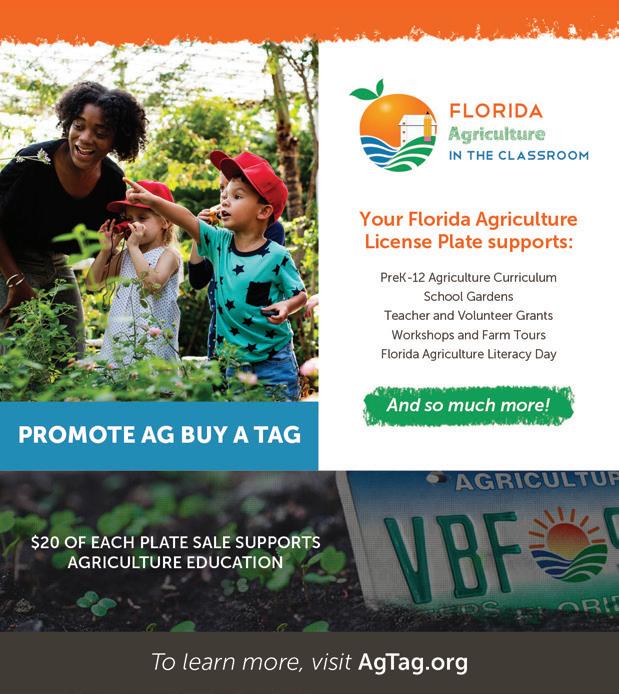
“I love the barn owl project, it’s been fun to work with, and I hope to stay involved,” Raid says. “It helps growers, helps barn owls and helps the environment. How often do you have a chance to do that?”
– Danielle Rotella AdamsIn late 2021, Israeli professor and researcher Dr. Motti Charter and the Charter Group for Wildlife Ecology at Haifa University partnered with the UF Barn Owl Project to set up live webcams in the nesting boxes, helping researchers learn more and people observe the owls without disturbing their habitat.
Scan the QR code to view the owl box cameras.

The Florida Nursery, Growers and Landscape Association (FNGLA) has a slogan: “We know what grows.” Of course, that could be said about all of Florida horticulture.
Nationally, Florida ranks first in the value of floriculture cash receipts at $1.07 billion, according to the Florida Department of Agriculture and Consumer Services.
FNGLA is the nation’s largest state nursery and landscape association, with more than 2,000 member companies, including Ralph Taylor’s Nurseries (RTN).
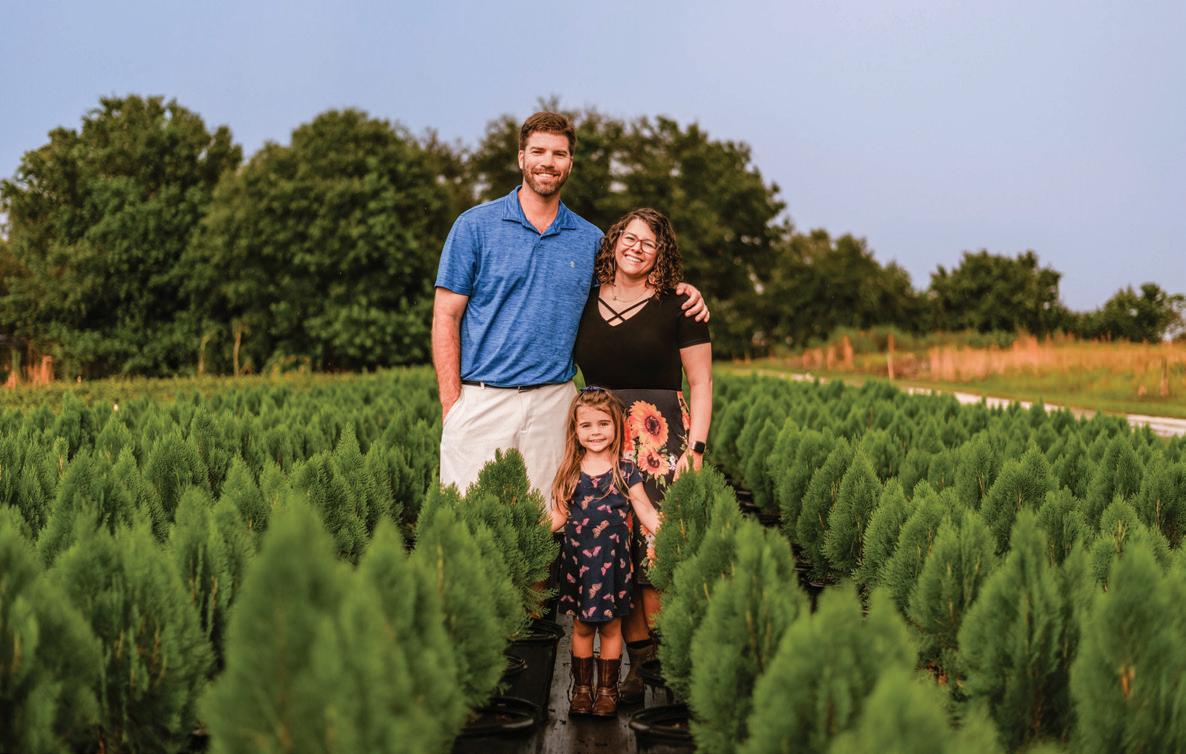
John and Janyel Taylor of RTN share their experience
and knowledge of what grows in Florida in multiple ways.
John’s grandfather, Ralph Taylor, started the nursery in 1968. Over the years, John’s father, Greg, bought out other family members. For more than 25 years, the Bradenton-based business has sold exclusively to Home Depot stores across four counties, with John and his wife, Janyel, now running most of RTN’s operations.
“We are really proud to be a local grower who can supply multiple areas throughout the state with locally grown product,” John says.
Janyel recently joined the company full time after eight years as an award-winning high school agriscience teacher. She guided more than 20 students in passing the FNGLA Certified Horticulture Professional (FCHP) exam.
FCHP is the industry’s only standard for measuring knowledge of the fundamentals of horticulture, including everything about plant biology from soil health to plant maintenance.
“We look at FCHP certification as measuring the ‘why’ of horticulture,” says Merry Mott, FNGLA’s director of certifications and career development. “As people learn more
and work hands-on, there are also exams that measure the ‘how,’ such as irrigation service, installation, design and maintenance.”
RTN produces more than 1 million plants annually, including the ever-popular hibiscus, crotons and gardenias commonly found in Florida garden centers. John says they’re also working to introduce keystone plants, which form the backbone of local ecosystems.
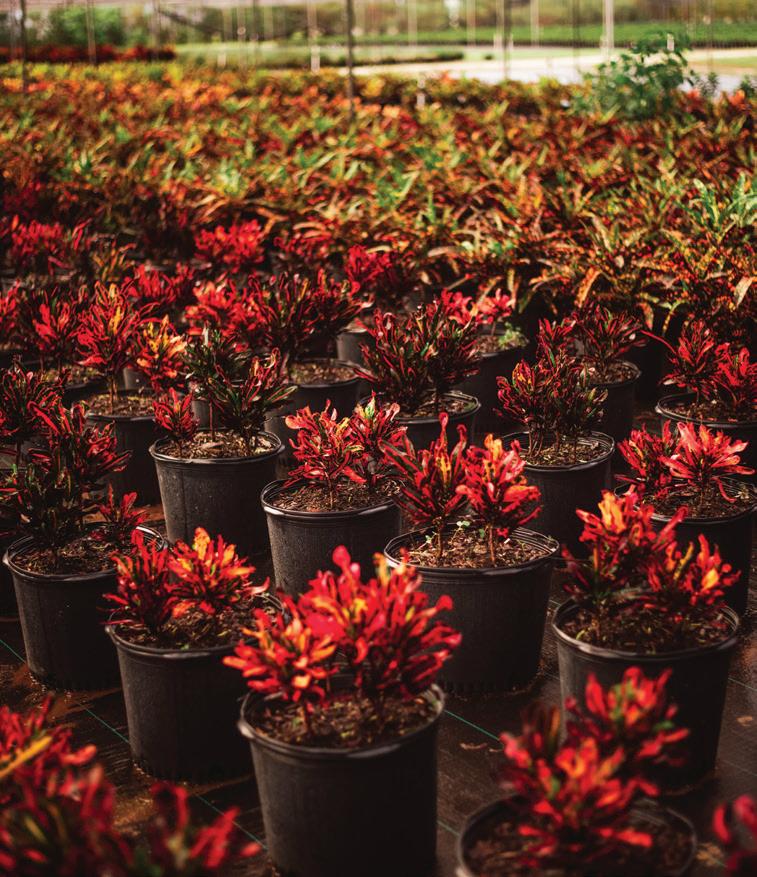
“Home Depot lets us use our education and expertise to introduce Florida natives to what we call ‘Florida-friendly’ plants,” he says.
Some of their favorite native plants include a Florida native honeysuckle, muhly grass and Walter’s viburnum.
RTN has been recognized for utilizing beneficial insects to control pest issues.
“We do a lot of biological controls like ladybugs,” says Janyel, who is also FCHP certified. “We use predatory mites on things like crotons and roses, and a lot of our sprays are neem oil, a naturally occurring pesticide.”
The Taylors share their knowledge for several reasons, including the frustration they experienced with their favorite gardening TV programs and podcasts highlighting plants unsuitable for Florida’s heat and humidity.
“We’re such a unique growing microclimate,” John says.
Early in the pandemic, a friend of the Taylors with multiple academic degrees had no idea how to grow tomatoes.
“At that moment, I realized people just don’t know gardening,” Janyel says.
The epiphany moment resulted in a blog, The Veranda View, which offers tips and how-to videos on
a wide variety of topics.
“We want people to garden,” Janyel says. “It helps the environment, it helps the state economy, it’s great for mental health and it gets kids outside working in the soil.”
One of their blog entries focuses on the importance of continuing education, including FNGLA certifications: “The businesses and individuals with certifications are typically the most respected, successful and responsible,” John writes.
In addition, employees holding certifications typically earn more. Mott notes that more consumers, both commercial and residential,
are seeking companies employing certified personnel for their projects – folks who know what grows well in the customers’ area.
“With the importance of the nursery industry to the economy of the state, it’s important to have professionals within the industry who have that measure of knowledge,” Mott says.
– Kim HillTo learn more about gardening in Florida and the FCHP certification, visit floridagardening.org





Community Supported Agriculture (CSA) allows local consumers to purchase a share of a harvest, prepaying so that farmers have the money they need to invest in seeds and other supplies upfront. Then, subscribers enjoy a set of vegetables or other produce weekly or biweekly for an entire growing season.
Here in Florida, these programs help farmers operate with financial security, deepen relationships with locals and broaden access to local produce at the peak of freshness.
Cetta Barnhart runs Seed Time Harvest Farms out of a passion for helping small- to mid-sized farmers and her local neighbors.
Ten years ago, she saw how a supply chain issue left a whole field of zucchini to rot. In an effort to prevent food waste, Barnhart
determined that there needed to be an outlet for overproduction that also brought food variety to local consumers.
“One farmer had an overproduction and gave me a good price to glean the excess, which I was able to harvest, sell and give away,” Barnhart explains. “We were able to put some cash in his pocket and give him publicity to promote his farm.”
Barnhart sees her customers try new vegetables, such as the okra-like tindora, and find new favorites, all while giving farmers new revenue streams. Her CSA shares also include products she makes with the produce, like a tonic called Genie in a Bottle made with turmeric, ginger and coconut water, which her customers say helps with digestion and energy.
“This keeps community support right here, putting your dollars to
CSAs create a new market for people to find local foods and try new varieties. Farms are continually producing fresh commodities to ensure happy customers and partaking in sustainable practices to ensure a healthy environment.
» Bilbrey Family Farm has about a 65% retention rate for members in their CSA year to year.
» Worden Farm has partnered with the U.S. Department of Agriculture and the Southwest Florida Water Management District on micro-irrigation and other water conservation projects for improving environmental quality.
» Worden Farm uses thousands of trees to promote soil and water conservation, serve as windbreaks and provide wildlife habitat.
» Seed Time Harvest Farms connects farms and consumers in five different counties of Florida: Jefferson, Leon, Madison, Taylor and Wakulla.
Sources: Bilbrey Family Farm, Seed Time Harvest Farm, Worden Farm
work,” Barnhart says. “It’s just being a friendly neighbor.”
Chris and Eva Worden of Worden Farm offer a farmstand and produce credit options, but their Farm Box membership option is also a popular choice, where subscribers receive a mixed box of produce weekly throughout the season.
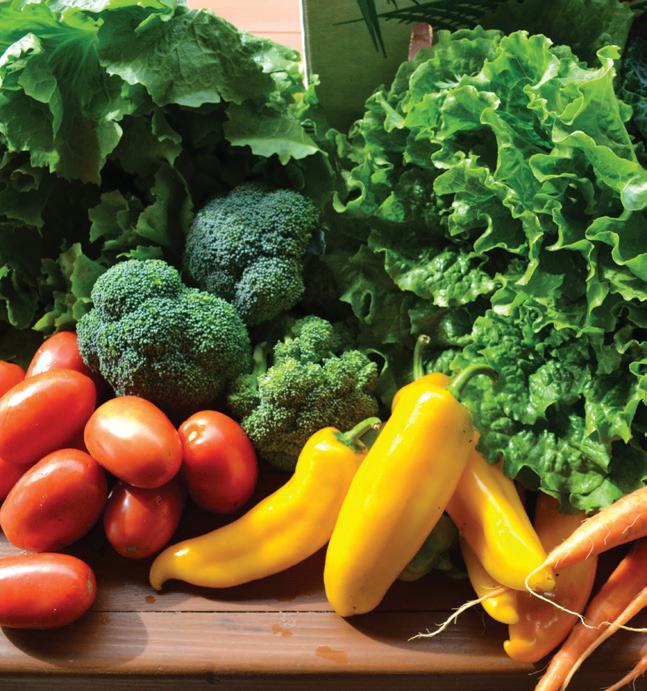
“It’s farmer’s choice,” Eva says. “You open the box like a contestant on Chopped, and you cook whatever surprise produce you get.”
All the CSA administrators mentioned that the boxes offer customers a chance to sample produce they wouldn’t otherwise choose and discover new favorite foods.

The customers are getting the most flavorful and sustainable version of these new foods, too. Worden Farm is certified organic and promotes new techniques for sustainability through internships and education efforts.
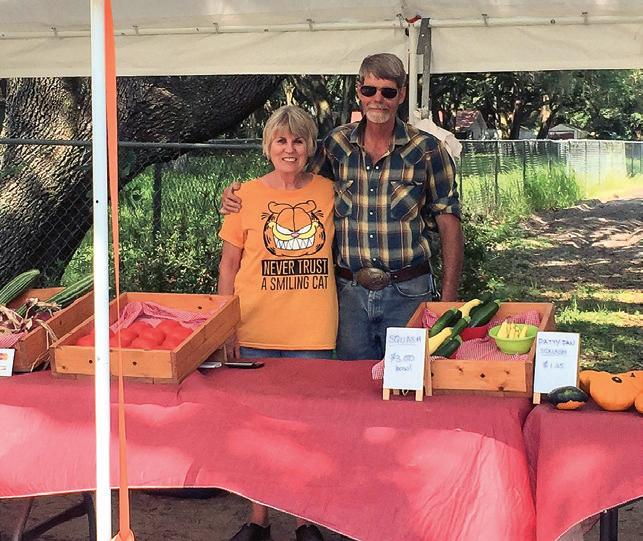
“There are benefits beyond the products themselves,” Eva says. “More people are becoming aware that we need to take responsibility for our environment, and CSAs make it easy if there are farmers in your area doing it.”

Rodger and Carol Bilbrey of Bilbrey Family Farm thoughtfully take great care of their CSA members and farmstand customers. They pick the produce either the day before or the same morning it is distributed to consumers. In addition, they offer a trade-out box in case a family wants to switch something they won’t use for
something they will.
CSA members take on some of the risks as well, like how weather can affect crops, becoming allies with the farmers. One year, an untimely freeze hurt production, so the CSA skipped a week, and their members understood. Bilbrey Family Farms offered extra produce later in the season when they had an abundance, sharing both the tough times and the good with their participants.
Bilbrey Family Farm follows the U.S. Department of Agriculture’s
National Organic Program rules and regulations, resulting in produce that is free from herbicides. Connecting over this high-quality produce on pickup day has become another major benefit to members.

“CSA pickup is an enjoyable social outing for members, where they can talk to each other and share recipes and ideas,” Rodger says. “They also have a direct connection to Carol and me, and if they have issues with their own gardens, they can ask us what to do next.”
